Executive Summary
The aim of this paper is to investigate the impact of customer relationship management in the airline industry and its contribution to the success of the business with a case study of Cathay Pacific Airlines. In order to explore this topic area, the introduction of this paper focuses on the background of the research, rationale for the research, significance of the study, objectives of the study, research questions, and signposting.
Moreover, the literature review deals with the conceptual framework of CRM, configuration procedure, strategies, and doctrines, ineffectiveness of the conventional approach, improvement of performance in service industry through CRM approach, measurement and evaluation process of the effectiveness of this concept. Conversely, the research methodology formulates with an introduction, definition of research methodology, research design, quantitative and qualitative research approach, research philosophy, primary data, secondary data, sample size, data collection procedure, data analysis process, questionnaire design, ethics, reliability and validity of the research, scopes of the study, and limitations of the study.
In addition, the data analysis and findings chapter focuses on the background information of the company considering secondary data, analysis of the collected primary data and findings, and responses of the research questions. Finally, the conclusion chapter revisits the objective of the research and links that to findings for primary data and the literature as well as concentrating on the responses to research questions and to provide appropriate recommendations, which are action-based solutions to problems.
Introduction
Background of the Research
CPAL (2009) mentioned that the Cathay Pacific was established in 1946 as a domestic airline company registered under the jurisdiction of Hong Kong and now it is a globally activate aviation giant that operating cargo and passenger flights form 114 airports in 35 countries with successful track record within the industry. The company also involved with technical service for flight maintenance along with ground handling; at the same time, it has involved bulk investment to turn Hong Kong as an excellent cargo hub maintaining with global standards.
The company has strong accord with the aviation sector of China main land by owning a substantial share of the national carrier Air China and it also possesses another subsidiary Dragon Airlines that operate in ten different countries with strong base in the home country. The company has 152 ultramodern aircrafts including its subsidiary Dragon, the number of people serving in the company is about 20,000 at the home country and a large base of workers in the international service points (CPAL, 2009).
With substantial profitability, the company has listed in the Hong Kong Stock exchange and its shares are traded with higher demand in the market, although the global financial crisis has shocked its market price. Due to increase fuel price, unparalleled competition and recessionary impact seriously shocked the company’s sales revenue for which the company is eager to improve customer relationship management with the aim to gain the success of the business under the present environment.
Boland et al. (2003) pointed out that the terrorist attack of Nine-Eleven and concurrent global financial crisis had generated serious threat on the sustainability, and economic feasibility of airline industry in the USA, Europe, and rest of the world. As a whole the airlines industry is striving to recapture and get better profitability by improving their service quality, but initiative to reduce operational cost is a conflicting dilemma for the industry.
As cost reduction and service quality improvement cannot go ahead together, the industry has aimed to emphasis of the customer relationships as a strategic tool to achieve competitive advantage with the hope of gaining profitability in long-term. Boland et al. (2003) also added that the historical evidence of the airlines industry demonstrated that this sector has failed to recognise CRM as a management tools to design long-term strategy, but maintained it as a synonymous approach like other frequent promotional offers.
Thus, the industry belongs to huge gap with the long-term output of CRM and required to have vast research in the area of CRM with the aim to re-engineering their strategy in this regards and to gain competitive advantage under the concurrent recessionary economy.
Rationale for the research
The researcher of this dissertation has not very close working relation with the Cathay Pacific, but the author has travelled several times with this airlines and was really impressed with its in flight services, event their regular communication with the author has turned the author to think that Cathay Pacific is the nest of happiness on air. The author’s personal feeling to the airlines is that it is his own airlines and it is his moral obligation to contribute Cathay Pacific to improve its CRM.
During the study of CRM for the academic needs, while the question of selecting an aviation industry rose, Cathay Pacific came to the researcher’s mind above all, thus, the author has aligned to have an investigation with the CRM status and its effectiveness for business success of Cathay Pacific. Thus, the focus of this dissertation is to choose the case study of Cathay Pacific to evaluate effectiveness of CRM for business where the author has an evaluative position to determine his personal likings and interest; however, the readers would get better feelings to go through the dissertation by knowing the author’s reason of interest.
Significance of the Study
The aviation industry is under enhanced pressure to gain its competitive advantage with different strategic alignment due to raising fuel price, recessionary economy and unparalleled competition for which the author considered it significant to conduct a study with ‘the impact of CRM in the airline industry and it contributes to the business success where Cathay Pacific is a case study.
There are huge professional and academic studies on airlines industry as it is one of the most significant sectors of the global economy and the demand of airlines is escalating dramatically, for instance, average growth in last five years was around 58%. However, Cathay Pacific is one of the global market leaders in this industry, which is committed to deal with large aviation projects to play imperative role for the development of the Chinese economy. However, CRM of Cathay Pacific has established in order to enlarge existing customer base and to construct new sustainable connection with the customers in long run in very effective manner to maximize the revenue and growth of the company. As a result, it is significant to conduct the research to enhance the practices of customer relationship management at Cathay Pacific Airlines
Aims/ Objectives of the study
The main objective of this dissertation is to examine how customer relations have changed in the airline industry within the last ten years, taking particular interest in how Cathay Pacific has changed its approach to treating customers in order to keep up with competition from rivals from the Asia-Pacific region and from the entire world. Rather than the main objective, this dissertation has goals and aspirations for the following aspects –
- To evaluate theory of CRM.
- To find out the CRM practices of Cathay Pacific Airways.
- To evaluate the relationship, impact of CRM with the company.
- Finally, to provide recommendation for this dissertation.
Research questions
With the prospect of gaining above-mentioned objectives, this dissertation would investigate with following research questions –
- What is the best CRM approach designed and practiced in the global airlines industry;
- How the effectiveness of CRM approach are measured;
- How the CRM approach could improve the performance measure in the service industry;
- To what extent the CRM approach of Cathay Pacific are effective.
Brief Methodology
The author of this dissertation has aimed to conduct survey for both the customers and employees of Cathay Pacific including few managers, to conduct the customer survey this paper would follow “Quantitative approach” and for employees survey the author would use ‘qualitative research approach’ with open end questionnaire. To collect primary data, the author would distribute questionnaire through fax, e-mail, and postal service to the headquarters of Cathay Pacific in Hong Kong and other station and regional offices in different location including United Kingdom, while for some instance, the author has to interview over telephone.
To conduct customer survey, the author would contact station manager of Cathay Pacific Airline at Heathrow airport Terminal – three with the aim to distribute questionnaire among the in-flight passengers. For secondary data, this dissertation would use most influential publications and journal articles of legend authors of CRM including the special research with Cathay Pacific and its annual reports of different years.
Signposting
This dissertation has aimed to illustrate the effectiveness of CRM for the business success of Cathay Pacific connecting the customers’ responds and employees’ motivation and exploration within the existing operation of the airway, to scrutinise and explore the topic area; however, this dissertation has structured and contained with the six major chapters presented below-
- Problem Statement: – This part of the dissertation has specified why the research with CRM of Cathay Pacific is essential, endow with the underlying problems of CRM practice, identifies the research gaps, pointed out to the agendas for this research; raises the research questions and affirms Signposting for all the chapters;
- Literature Review: – This part of the dissertation instigate with the theoretical framework of CRM practice that have been emerged and developed linking with the motivation of modern business; presents too more up-to-date literature of customer relationship management in the aviation industry with the aim to theoretically arguing to the research questions that would make sense for suitable business development;
- Research Methodology: – The most essential chapter of the dissertation demonstrates how the chosen research methodology would set up with the prime goal of the present investigation and how it will complete throughout this contemporary study, what would be the data collection method and how they would be analysed to reach at ultimate findings;
- Findings: – This chapter of the dissertation concentrates on the collected data, refine them to avoid unanticipated results concreting on the findings as well as hypothetical application for the information delivered from the concurrent CRM practice of Cathay Pacific and proposes idea generation for the present research from primary data generated from the employees and customer’s responds;
- Discussion: – Moreover, this chapter confer with the results by reflecting the outcomes of this study and argue on validation of findings that will ultimately justify the findings from the real life perspective linking to practical evidence of CRM practice at Cathay Pacific;
- Conclusions: – This is the last chapter of the dissertation, it will summaries the entire process, advocates sensible outcomes, prepares the solution recommendations to promote conclusions as well as implications of this study pointed to the further research with customer relationship management in the aviation industry.
Literature Review
Introduction
This literature provide theory of customer relationship management as it has a long history of chronological practice by the business community as a strategy with the aim to accelerate marketing, sales and whole business development, from the traditional consideration (Berndt, Herbst & Roux, 2005, p.2; Peppers & Rogers, 2004; and Belch & Belch, 2009; and Pelland, 2007). However, CRM is just a strategy to provide competitive advantage, but in the modern IT era, it is an indispensable tool for business (Oztaysi, Sezgin & Ozok, 2011; Santoso, 2006; Chen & Popovich, 2003; Berndt, Herbst & Roux, 2005; and Nguyen, Joseph, Newby, 2007).
This literature will analyse the theoretical or conceptual framework of CRM, compare the difference between traditional CRM and modern CRM practices, and provide different CRM strategies and effectiveness of different model to evaluate the performance of CRM to enhance customer base and to recommend for the future success of the Airline industry.
Conceptual Framework of CRM
Customer relationship management is a strategic tool and a managerial philosophy, which use to develop the relationship with the different markets (Peppers & Rogers, 2004; Nguyen, Joseph, Newby, 2007; and Belch & Belch, 2009). Conversely, CRM is an essential issue to congregate instantaneous information about precedent sales, service records, performance records, and unresolved problem calls (Apicella, Mitchell, & Dugan, 1999; Sheth & Parvatiyar, 1995; Oztaysi, Sezgin & Ozok, 2011; Santoso, 2006; and Nguyen, Joseph, Newby, 2007).
Historical Background and Development of CRM
In mid-twentieth century, mass manufacturing procedures and mass marketing altered the competitive landscape and the purchasing process that allowed shopkeepers and customers to know each other was also changed (Chen & Popovich, 2003, Dych, 2001; Ryals & Payne 2001; Kanellakis, 2005; and Friedrich, Sprenger, & Breitner, 2010). Therefore, consumers lost distinctiveness, as they became an “account-number” and shopkeepers overlooked consumer-individuality; nevertheless, numerous corporations today are racing to re-establish their bonds through CRM applications (Chen & Popovich, 2003; Ryals & Payne 2001; Kanellakis, 2005; and Friedrich, Sprenger, & Breitner, 2010).
However, Dych (2001), Friedrich, Sprenger, & Breitner, (2010), and Pelland (2007) stated that customer relationship management is a deliberated corporate strategy; presently, numerous academics like Ryals & Payne (2001) and Kotler & Keller (2006) believes that CRM is an administrative viewpoint. However, Kanellakis (2005), Chen & Popovich (2003), and Ryals & Payne (2001) stated that it has further added that it seeks to develop long-term relationship with customers in order to boost sales. In addition, it enhances the affiliation with the diverse markets, as well as the final consumer (Dych, 2001; Friedrich, Sprenger, & Breitner, 2010; Kanellakis, 2005; Nguyen, Joseph, & Newby, 2007; Pearson, 2009; Peppers & Rogers, 2004; and Belch & Belch, 2009).
Nevertheless, CRM is an information system that trails clients’ communications with the corporation that includes the application of technology in the construction of databases that permits the recruits of the company to openly pull up information about the target consumers (Santoso, 2008; Pearson, 2009; Pivotal CRM, 2007; Peppers & Rogers, 2004; Urbanskienė, et al 2008; and Nguyen, Joseph, Newby, 2007).
On the other hand, Anton (1996), Parvatiyar & Sheth (2001), Berndt, Herbst, & Roux (2005, p.2), and Kotler & Armstrong (2006) stated that the perception of 4P is developed as a tool for marketing accomplishment and considered conformist paradigm for marketing management, but background and the connotation of CRM has developed with new contour under the present challenging fiscal condition.
Definition and Importance of CRM
The appropriate definition of CRM has generated as a procedure of maximizing customers’ value (Anton, 1996; Keller, 2009; Peppers & Rogers, 2004; and Berndt, Herbst & Roux, 2005) by synchronized marketing activities, integrated proper management of customer’s knowledge and information and relation with them (Apicella, Mitchell, & Dugan, 1999; Belch & Belch, 2009 and Greenberg, 2009). CRM is an information system that tracks customers’ interactions with the company (Peppers & Rogers, 2004; Nguyen, Joseph, Newby, 2007; and Belch & Belch, 2009).
Yet, Sheth & Parvatiyar (1995) and Pearson (2009, p.3) noted that the significant elements of traditional CRM include factors such as sales force automation, marketing automation, knowledge base, and many other criteria that works together to enhance relations with the customers of the business. Regarding this issue, Anton (1996), Baran, Zerres, & Zerres (2009), and Pearson (2009) stated that sales force automation, telemarketing, product configuration, marketing campaign, and support tracking were early drivers of CRM tool; on the other hand, customer portal or web-based customer access to the CRM structure is now a supreme requirement.
Friedrich, Sprenger & Breitner (2006) and Parvatiyar & Sheth (2001, p 6) pointed out that huge efforts of the academia and scholars have been deployed to identify how CRM involves in the modern corporation; and to do so, a number of theoreticians like Borys & Jemison (1989, p234-240) and Wilson (1995, p4-30) have presented several models which are chronologically developed.
Additionally, models of CRM have come into practice to reveal the process of how it involves with firms; however, this paper would present four- folded CRM practice framework that encompass customer relationship configuration process at first, a course of action relationship governance at second, a relational evaluation system at third, and a CRM evolution procedure at last step. The following figure provides an overview about the method through which customer relationship management incorporates and functions in the modern corporation by integrating numerous strategic tools:
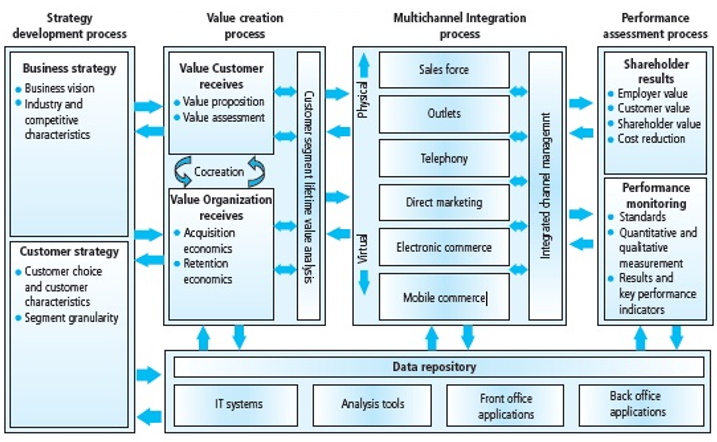
Kanellakis (2005), Gummesson (1994), Borys and Jemison (1989, p. 235), Pearce & Robinson (2006) and Kotler & Keller (2006) pointed out that the general rationales of involving with CRM in business organizations are to rise up the marketing efficiency along with improved reciprocal values for both the customer and company connecting through bilateral relationships in the marketplace.
The recuperating marketing is effectual, and generation of shared values could be gained next to the accelerating marketing success, while for the companies, the route to gaining such operational objectives are dependable on lesser distribution costs with rehabilitated order-handing system, vibrant inventory management scheme, with decreasing customer attainment cost compared with expenditure for customer retention, which would provide superior marketing-efficiency.
There are so many processes to improve marketing efficiency for the companies starting from cautious choice and categorization of customers by addressing each customer’s individual needs, enhanced loyalty along with promise, pointing to the competitive advantage of the brand, offering pioneering product line and adding new market drives (Kanellakis, 2005; Dych, 2001; and Kuusik, 2007).
As a consequence, in deciding the grounds of involving with CRM and its goals within the system, the companies would carefully assist to illuminate the characteristics of CRM programs along with functions, which the companies are practicing or thinking necessary to integrate by their own CRM department or by outsourced associates (Gummesson, 1994). At all pace of expounding the reason of involving with CRM, the companies must identify the potential relationship of collaborators along with identifying the relationship of partners with the indispensable prospects and capabilities to accomplish common objectives in easy way.
It is also vital to assess the achievements of the CRM program by defining and comparing with the financial objectives of the company, its marketing ambitions, long-term and short- terms strategic goals as well as operational and organizational objectives of the company (Kotler & Keller, 2006; and David, 2008). At the same time, by relying on the market condition, the companies would take into account that the customers are always eager to fulfil their objectives effectively, which points to their consumption behaviour that is concerned to have necessary motivation by addressing psychological and sociological benefits (Kotler & Keller, 2006).
Configuration Procedure, Strategies, and Doctrines
Borys and Jemison (1989) and Doney and Cannon (1997, p. 41) mentioned that configuration procedures, which the companies put into practice for CRM integration is the scheme to manage and administer the relational actions to their customers who are already been engaged with the purchase of some manufactured goods or service or are going to purchase. During the post purchase scenario, the firms are enthusiastic to employ in an accommodating or mutual relationship with the aim to retain while in the pre-purchase step it drives to convey marketing message target customers.
The firms would do the most momentous congregation of categorized customers identifying them with different attributes of the individual groups by configuring the CRM process (Borys and Jemison, 1989 and Doney and Cannon, 1997). Within the configuration procedures of CRM, it has identified that there exists three essential decision-making vicinities, such as, deciding the reason of involving with CRM, deciding the customer groups for whom the CRM scheme would be suitable, and budding different action plan to build effectual relationship with the potential customers. The following figure shows the configuration procedures in brief –
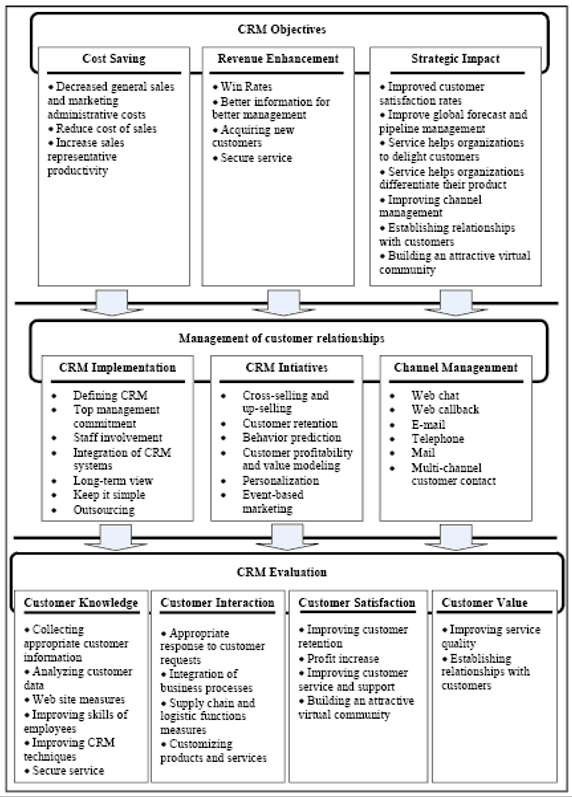
Friedrich, Sprenger, & Breitner (2010) and Parvatiyar and Sheth (2001, p.6) identified that after cautious evaluation of marketing literature the marketing practitioners have identified many approaches of CRM programs. From greater amalgamation, these schemes could be sorted out into three classes, such as, continuity based marketing, next is one-to-one marketing and the rest is collaborating programs (Friedrich, Sprenger, & Breitner, 2010; Johansson & Sparredal, 2005; and Parvatiyar and Sheth (2001, p.6).
Amongst the three classes of CRM programs, all could shape diverse forms connecting with the category of end user clients, integrated distributor channel of the customers as well as B2B- customers while there are also opportunities to develop further categorization depending on bilateral interest of concerned parties; however, from the viewpoint of business concerns, not all customers are equally valued
Lieberman (2011), Lawson-Body & Limayem (2004) and Sheth and Sisodia (1998, p.11) expressed that in the modern business eighty percent of the revenues of a company have generated by only twenty percent prospective customers and the rest twenty percent revenues comes from inferior eighty percent clients. As a consequence, it is most essential duty for the CRM program initiators to recognize the potential customer fragment to provide superior class of service delivery for them by allocating higher resources than the ordinary customers, such discrimination allocate and enhance the customers’ psychological alignment to stay in the superior class increasing their purchase volume.
Therefore, under these circumstances, the CRM program will be suggested going for offering product or services mentioning customers segmentation as well as program differentiation with elevated revenue prospective justifying the greater assessment of costs and service comparison; if not, competitors would take hold of the chance through offering enhanced service with greater provision of resources for high end customers.
In the meantime, a major part of the lower-end customers would attempt to lift their position, while firms would align to gain cost savings by allocating less expensive resources for this class. Some studies suggest that the revenue and cost- reallocation opportunity zone is needed for the companies to integrate CRM program for their customers and the administrators argue that companies could choose to engage with an average cost per customer rather than spending proportionately to revenue generation by the concerned customer group (Lawson-Body & Limayem, 2004).
According to Kotler & Keller (2006), such alignment would provide cost-reducing arrangement for the CRM program, but this practice would facilitate the competitors to attract high-end customer by allocating high-end resources, which will seriously threaten the overall enlargement of the corporation. The following table shows some examples of the crucial characteristics of the conventional mode of customer relationship management by the companies:
Pivotal CRM (2007) suggested five key doctrines of CRM, which are discussed at this section of this paper; it has been pointed out that by adjusting a structural design of CRM, which is organized with the following five principles in mind, the basis for CRM-success can be further assured by the organization operating in any particular industry of the world. The CRM strategy of the corporation must fit with its strategic objectives and goals, and the workers must work in accordance to the way the corporation runs; with no alteration in the procedures, which make the corporation idiosyncratic; furthermore, the workers must possess access to all the consumer information they need, whenever they need it, and in their selected view.
On the other hand, the corporation should construct the CRM vision first by describing a valuable consumer experience and it should conduct its operations on the customers’ terms, with one global view, and innumerable local relationships, making user adoption a top priority. The organization should also formulate a precise Customer Relationship Management infrastructure, which works in compliance with its tactical decisions; on the other hand, the entire system must be flexible enough to build in complex business processes by ensuring better administration; most importantly, the CRM should help the organization to grow – and grow along with it.
CRM makes it simple to convey rapid and acquainted service; at some point, the majority of businesses will have a need or want to calculate the success of CRM execution; so the objectives and metrics should be enumerated and benchmarked right from the beginning to make sure that the right information is detained to compute results acceptably down the line. In addition, the organizations must judge Total Cost of Ownership (TCO) watchfully and appreciate that industry- specific CRM lowers total costs; moreover, in order to handle cost expectations in due course, firms should analyze and conduct TCO with a perceptible scrutiny; furthermore, a sound scaffold for evaluating results over the life of the project must be stated at the beginning.
Conversely, the corporation must try to think beyond some confined features, and pick the right collaborator, as an accommodating collaborator can make all the difference; they should use industry knowledge and experience to pay dividends; on the contrary, it is vital to evaluate company aims, technology-strategy, IT-budgets, opportunity-costs, customization-requirements, and industry sector requirements before choosing a perfect CRM solution.
Ineffectiveness of the Conventional Approach
In analyzing the cause of why the conventional approach of customer relationship management is turning out to be increasingly ineffective, a number of scholars have argued in different manners. Kotler & Keller (2006) and Pearson (2009, p.13) mentioned that half of CRM projects were ineffective to bring on anticipated savings and competitive advantages; in addition, Oztaysi, Sezgin & Ozok (2011, p.2) suggested that the success rates of the existing projects of giant or small or medium sized companies were disappointing as the rates were up and down from 10-30%.
However, Oztaysi, Sezgin & Ozok (2011, p.3) contrasted data of quite a lot of companies to compute annual success rate from CRM projects, for instance, positive return on CRM investments of Meta Group was only 10% in 2003, and success rate of CRM initiatives of Cap Gemini Ernst & Young was about 30%. Moreover, Greenberg (2010) noted that CRM possess superb prospects in spite of a narration of ineffectiveness of conventional CRM; however, such failure from traditional CRM influenced the companies to drive into better options; the following figure shows the most common reasons for ineffectiveness of the conventional approach:
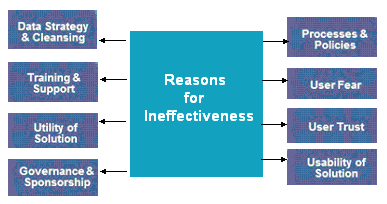
It is notable that the traditional theoreticians of CRM has observed the issue as a customer faced point of reference for marketing direction that basically engaged for either sales promotion or else service quality improvement while the marketing literature of eighties were interested to concentrate on the customer and market rather than any other issues. However, Nguyen, Joseph, Newby (2007) pointed out that the modern business has recognised customer at the top priority of organisations where the every success of business is closely dependant in customer; thus to maintain a live relation with the customer is the foundation of successful business.
The employees are now under huge pressure than ever to maintain a successful relationship with customer by providing right service that satisfy the customers at maximum level through implementing a CRM strategy. The exploration of the Information technology has turned the CRM as a fully automated practice that involved with different ERP and CRM software that improved CRM in an accelerated stage.
Analysing the Best Approach Practiced In the Global Airlines Industry
According to Boland, Morrison, & O’Neill (2002), in this rapid pace of globalization, where an increasing number of new airlines are entering the market to compete side by side to the existing industry giants, as well as the fact that international economic turmoil has lowered down the customer confidences, it is time for the airlines to rethink their existing CRM-approaches. So far, a number of airlines have thrown away their conventional approach of customer relationship management due to the reason that it is turning out to be increasingly ineffective. Boland, Morrison, & O’Neill (2002) have illustrated that how the conventional method of CRM is becoming ineffective gradually to cause improvements in the performance of the industry in a true sense; this has shown in the figure below –
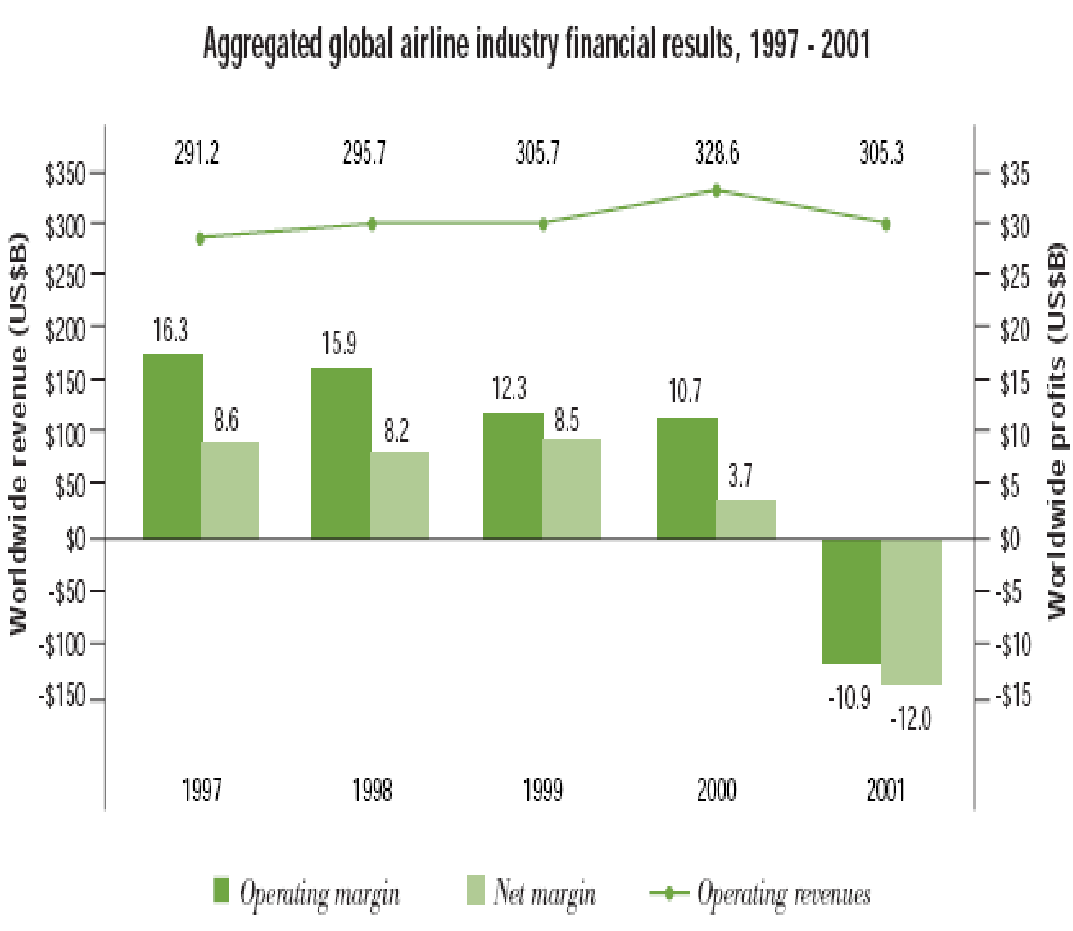
Now, a fast growing trend in this global airlines industry is to change and redesign to a new approach of customer relationship management – social CRM or CRM 2.0 (Salfen, 2005; Tarokh & Majidi 2005; and Viaene & Cumps, 2004). Whilst social CRM is now widely practiced in some arenas of the global airlines industry, it is considered the best method of relationship management based on the reasoning of a number of advantages it provides.
Yet, Greenberg (2010) noted that “social customer relationship management” is an extended part of customer relationship management, and not necessarily a substitute; similarly, Baird and Parasnis (2011) stated that SCRM appends value back to the consumers and deals with how strategy makers require adjusting to social-consumers together with their expectations in regards to firms where they have stake. In this part of the research, it is important to focus on analyzing why this has considered the best format of relationship management practiced and designed in the global airlines industry and how much effective it comparing to the traditional approach.
However, it is notable that Myhill, Shoebridge, & Snoo (2009) has added that with a focus on strategy, consumer involvement and relations, SCRM steps ahead of supervision of clients, dealings, or capital; it turns into a buyer-engagement approach that upholds organizational aims and purposes towards amplification of consumer satisfaction (Selvas, 2010 and Metrics Marketing Group, 2011). Conversely, Tredinnick (2008), Dimitroff (2006), and Chess Media Group (2010) suggested that SCRM chiefly embraces of an idea together with a corporate policy, backed via IT-platform, corporate regulations, procedure, and communal-characteristics as well.
A number of features and methods about how the entire airlines industry of the world carry out this new form of customer relationship management are considered in the table below:
In addition, corporations originate SCRM to attach with the consumers in a shared dialogue with an aim of providing reciprocally advantageous services, based on reliant and clear business-atmosphere; to put plainly, this is the firm’s rejoinder to the consumer’s rights on the discussion (Dimitroff, 2006; Desai, 2010; Greenberg, 2010; and Chess Media Group, 2010). Furthermore, according to Tredinnick (2008) and Dimitroff (2006), through the impression of Web 2.0, the enduring and innermost intricacy of the hearsay of CRM gains a new-fangled dimension through which the critique of the importance of the social networking media can have a high- level of exposure.
Most importantly, customer relationship management over internet leads to consumer loyalty; and for any organization, smart use of Web 2.0 can lead to triumphant attachment from the part of the customers (Desai, 2010; Oztaysi, Sezgin, & Ozok, 2011; Pearson, 2009; Myhill, Shoebridge, & Snoo, 2009; and Berndt, Herbst, & Roux, 2005). However, O’Reilly (2005) pointed that the proposal of Web 2.0 assimilation started in a thorough discussion-session between O’Reilly and Media-Live-International while in the discussion, Dale-Dougherty stated the significance of incorporating web competently to better maintain tasks; hence a clear distinction was made between Web 1.0 and Web 2.0, which forms the basis on which the concept of CRM 2.0 lies.
Although the global airlines industry is constantly trying to adopt the CRM 2.0 approach for better outcomes at lower costs of undertaking the project, it is notable to argue that both SCRM and CRM contain a number of essential components in common, which are categorized in a series of events; the most decisive components have been given discussed below:
Some other features and components include the following:
Improvement of Performance in Service Industry through CRM Approach
A number of studies have suggested that several methods are present through which the performance of the service industry can be improved by the CRM approach. However, Anton (1996), Apicella, Mitchell, & Dugan (1999), Sheth & Parvatiyar (1995), and Pearson (2009, p.6-8) has added that the advantages of CRM to the service industry were often misinterpreted particularly by the owners of many small and medium sized companies who often considered it to be an ineffective strategic tools and an ultimate loss of investment.
Nevertheless, the administration of large corporations have concentrated on this issue considering benefits in terms of performance improvement of service industry; such as, cost savings, customer satisfaction and loyalty, maximization of profits, improved internal accountability, employee satisfaction and so on (Sheth & Parvatiyar, 1995; Peppers & Rogers, 2004; Maklan, Knox & Peppard, 2007; Pearson, 2009; and Belch & Belch, 2009).
Consequently, all business firms in the service industry invest more to create customer equity as these firms struggle for customer satisfaction (Pearson, 2009; Peppers & Rogers, 2004; and Baran, Zerres & Zerres, 2009); in addition, according to the testimonial of Baran, Zerres & Zerres (2009), the fundamental principle of this strategic tool is to achieve and retain the loyal customers. However, one of the most noteworthy performance improvement components of CRM for the service sector firms is the level of customer satisfaction that yields the success of CRM program and the first aim of CRM is to reduce cost as technology makes it easier to reach target customers (Maklan, Knox & Peppard, 2007; and Baran, Zerres & Zerres, 2009).
Measuring And Evaluating the Effectiveness of the Approach
Academicians principally investigate CRM procedures and most research analyzed the procedures in two levels, namely, macro and micro – level procedural approaches as business-wide procedures; which are strategy advancement, value creation, channel integration, knowledge- organization, and performance evaluation process; on the other hand, micro-process approach focuses on customer interaction management in order to maintain long-term profitable customer relationships. Johansson & Sparredal (2005) and Baran, Zerres & Zerres (2009, p.390) pointed out that it is imperative to measure and evaluate CRM projects and tools, areas requiring measurement, quality of service, retention of customer or loyalty, customer cycle measures, company competence, competence and staff behaviour –
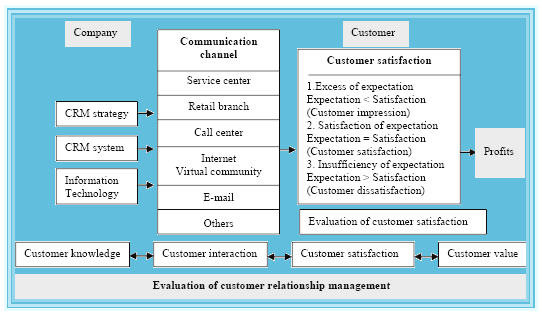
Johansson & Sparredal (2005) and Parvatiyar and Sheth (2001, p.17) further identified that the CRM scheme would take evaluation of every purchaser within the company through bilateral steps where few of them are predetermined and the others are generated by the way of practice including doggedness, termination of the relation, its improvement and adjustment of the affiliation commitment.
The assessment- process would provide hint while the companies need to increase the facilities, when the customer would tend to cease the relation; failure to addressing the expectation of the customer could not manage without reconfiguration of the entire system (Johansson & Sparredal, 2005; ), Johnson, Seholes & Whittington, 2008; Baran, Zerres & Zerres, 2009; Mack et al. 2005; and Berndt, Herbst, & Roux, 2005). In this consequence, to overcome concerned risks of the relation, the CRM scheme would suggest the companies to accomplish evaluation and get feedback from the customer after every sale take place and keep enough space to accommodate customers’ expectations.
By reason of the unwarranted workload on top-management and department heads to exhibit an instant result with customer relationship management projects, traditional measures of customer insight are often derived from trailing indicators, for instance, return on investment (Johansson & Sparredal, 2005; Greenberg, 2010; Greenberg, 2009; Baran, Zerres & Zerres, 2009; and Berndt, Herbst & Roux, 2005).
On the other hand, top-management of outsized companies also depend on the web analytics, which are also outdated and fail to compute actual customer base, for instance, page views, number of clicks, renovation rates and page or site “vulgarity” (Greenberg, 2010; Greenberg, 2009; and Baran, Zerres & Zerres, 2009). Greenberg (2009) and Sheth & Sisodia (1998, p.16) pointed out that performance measurement of the CRM program is a crucial factor for the sustainability of the scheme, rather than periodic assessment to conduct a regular evaluation and it is essential for the program coordinator to have performance measurement metrics.
Long substantiation verified that the unbiased scorecard has been adopting for the performance measurement metrics of CRM proposal that provide a diversity of procedures pedestal on distinct rationale of program in every step. In the meantime, there is one more globally recognized method of measuring performance of the CRM scheme, where the fortitude of relationship satisfaction like customer satisfaction measurement that provides indication for the existing supportive and mutual relationships between the client and the corporation.
Research Methodology
Introduction
This chapter will discuss methodological framework to organise this dissertation and it will consider number of factors including research objectives, research gap and questions, case study of Cathay Pacific Airways and so on. At the same time, this segment will describe motivation and justifications for the consideration of selected research approaches to organise the dissertation for the clear understandings of the readers.
Definition of Research Methodology
Research methodology is a technique of scientifically resolving the research dilemma or it is a means of an inquiry in order to attain these purposes in a meaningful way (Sekaran, 2006); Saunders, Thornhill & Lewis, 2006; Aaker & Day, 1990, Cohen, Manion & Morrison, 2007; Denzin & Lincoln, 2003, Malhotra, 2009 and Yin, 2003). On the other hand, it is the trained and scientific investigation of the principles and facts of research field, which helps the readers understanding the ways used in the research to discover the truth and to evaluate the validity of the results (Denzin & Lincoln, 2003; Saunders, Thornhill & Lewis, 2006; Kumar, 2005 and Eriksson & Kovalainen, 2008).
Thus, in a single statement, research methodology is the instrumentation and documentation of a research agenda for the route to resolving the problem area with a new finding in that area by adopting appropriate strategy that will contribute to gaining the goals and objectives of the research and addressing the research questions through validating by data collection and analysis.
Research Design
Malhotra (2009, p.75) and Yin (2003) pointed out that there are several ways to carry out research, but the researchers need to consider two thinks before starting the investigation, such as, prior knowledge and available information regarding the research problem area. However, Malhotra (2009, p.75) further classified research design as exploratory or conclusive whereas researchers like Cohen, Manion & Morrison (2007) and Saunders, Thornhill & Lewis (2006) mentioned that there are three categorizations of research available to deal with a research dilemma. However, the following figure shows the classification of research design more elaborately –

- Exploratory research: The aim of this type of research is to explore or research through a problem or situation to provide insights and understanding. It is meaningful in any situation where the researcher does not have enough understanding to proceed with the research project and it is a flexible method because formal research protocols and procedures are not employed (Malhotra, 2009);
- Descriptive research: On the other hand, the objective of this type research is to describe market characteristics or function, which needs to estimate the percentage of units in specified population, to determine perceptions of services, or to make specific predictions;
However, this paper will use descriptive research approach as the researcher has prior knowledge about the problem related with the impact of CRM in the airline industry.
Quantitative and qualitative Research Approach
Aaker & Day (1990), Sekaran (2006) and Zikmund (2006) discussed two types of research approaches such as quantitative (formalised along with well structured) and qualitative approach (unstructured as it includes open questions with no direction). However, Yin (2003) and Saunders, Thornhill & Lewis (2006) stated that quantitative method is useful to quantify, describe, and illuminate the phenomenon of real life perspective while qualitative approach is helpful to examine, interpret and appreciative by the means of an inside perspective.
However, this paper will consider quantitative research approach to quantify data of customer survey and use qualitative approach to analyse employees’ view as there are too many existing study on customer relationship management that using qualitative research approach to describe the subject in descriptive manner considering both strengths and weaknesses of the approaches.
Research Philosophy
Flowers (2009, p.3) and the Saunders, Thornhill & Lewis (2006) pointed out that the positivist point of view is based on that of natural science to develop the research from the existing theory while Jstor (2011) stated that the main point of positivism is the emphasis on the given in the interpretation of knowledge. On the other hand, Saunders, Thornhill & Lewis (2006) and Flowers (2009) further argued that positivists only observed the facts happen in organisations to scientifically measure the behaviour of the customers and Jstor (2011) reported that positivist point of view tends to be an attitude of the prearranged that seeks to support all methods of knowledge, free from ideal presuppositions.
On the other hand, Jstor (2011), Eriksson & Kovalainen (2008), and Denzin & Lincoln (2003) stated that phenomenology on standard means back to evidence; here, it is important to mention that the researcher has used both prior studies and fresh data in order to analyse the impact of CRM on the Cathay Pacific Airlines.
Primary data
According to the view of Zikmund (2006, p.71), Aaker & Day (1990), Malhotra (2009, p.37) and Curtis (2005, p.2), primary data is collected specifically to address the particular problem, which rose in research question. However, Curtis (2005, p.2) further added that the entire data collection procedure is time-consuming matter as this type of data cannot be found elsewhere and it needs to collect using several methods like surveys, in-depth interviews and so on.
Secondary data
Cohen, Manion & Morrison (2007), Zikmund (2006, p.71) and Aaker & Day (1990) pointed out that secondary data is more authentic and easy to collect. However, the researcher of this dissertation will use this type of data in order to justify the result of the primary data and to analyse few chapters with proper evidence; for instance, real life data regarding CRM process of Cathay Pacific Airline is available in several reports.
- The literature of customer relationship management has developed very quickly during last few decades, there are enormous books of most prominent authors in this area including a large variety of research and journal articles those provide enough scope for the present research for theoretical framework;
- The researcher of this dissertation intend to conduct real research on the customer relationship management of Cathay Pacific; there are already huge study connecting the CRM in the aviation industry, all those would provide an enhanced scope for this author to design the present research with standard structure and competent process;
- There are many available secondary data sources, such as, theoretical analysis in research paper those helps to identify gaps of the previous studies, which help the researcher to organise the paper, and to provide fruitful, realistic, and applicable suggestions and recommendations to improve the existing CRM practice at Cathay Pacific Airline.
Sample Size
The questionnaire includes different segment for the customers and employees of Cathay Pacific Airways to know their view to evaluate the effectiveness of CRM. However, this questionnaire has distributed to the five employees and 100 customers of Cathay Airways and it can assume that most of the respondents will complete the form properly as it includes simple questions with easy language. However, the following table gives more information about the target interviews –
Data Collection process
This paper will use both primary and secondary data in order to organise the paper. However, the questionnaire will be distributed to the target customers using e-mail and the researcher will call them to request to complete the forms and give their opinion regarding CRM process of Cathay Pacific Airlines. The rationale to send customer survey form using such method is face-to-face interview or field survey is the lengthy matter and the respondent groups may not feel interested to give appointment to interview because of Christmas and New Year vacation. However, primary data collection methods for this research are –
- Personal Interview: Face-to-face interview method will only use to collect data from the employees of Cathay Pacific Airline because the questionnaire demand broad answer;
- Electronic Interviewing: The questionnaire would be sent to the employees and customers of Cathay Pacific Airlines as it is one of the most instantaneous methods of primary data collection;
- Telephone: The researcher will take the support of technology and call the respondents to request them to complete the questionnaire and return to the researcher;
On the other hand, there are many internet databases to collect journal article regarding the impact of CRM on airline industry, such as, Emerald Journal. At the same time, other secondary resources are annual reports, case study, website of Cathay Pacific Airline, management books, and so on.
Data Analysis process
All the completed forms will be edited to remove unexpected error because many respondents can send the form without completing the form properly, or chose more option instead of single option. However, this data particularly customer survey forms will be analysed using Microsoft Excel and it will also be presented graphically to show the impact of CRM in the airline industry particularly case study of Cathay Pacific Airline. On the other hand, the feedback of the employees will simply describe the point of view regarding the CRM approach of Cathay Airline as this paper selected qualitative research method to analyse employees’ response.
Questionnaire Design
According to the view of Saunders, Thornhill & Lewis (2006), the questionnaire is one of the most significant marketing research tools to conduct survey to attain research objectives and proper outcomes. On the other hand, Marshall & Rossman (1999) and Miles & Huberman (1994) stated that questionnaire is important both quantitative and qualitative research as it makes easy to get exacted outcome from the respondents. However, the following bullet points give more details about the contents of the questionnaire for this dissertation –
- Section A: The purpose of the section one is to gather information about the employees and manager of Cathay Pacific Airways and this section organised with only three introductory questions. However, the answer of these questions includes information about years of experience of working in Cathay Pacific Airways, job department and highest education level of the respondents, which will help the researcher of this dissertation assess the credibility of respondent group;
- Section B: of the questionnaire has designed in order to know the view of the employees of the selected company. On the other hand, managers and employees are more aware about the effectiveness of CRM on Cathay Pacific Airways and the actual position of the company in global market in terms of market share and profit generation. However, this part concentrated on the importance of CRM in adverse economy, customers’ knowledge to make future strategy, customer satisfaction, value creation, and customer loyalty issue to assess present position and recommend about future;
- Section C: The last part of the questionnaire designed to survey the customers as only customers can express their experience properly in terms of service quality, facilities and communication method of the company.
Ethics
The researcher was ethically obliged to ensure the relevance usefulness of the secondary data to discuss the effectiveness of CRM in the airline industry; for instance, the research used secondary data to justify primary data and all such data was properly acknowledged from the universities and renowned publishers. At the same time, both secondary data and primary data has collected using proper procedures and maintaining moral standards, for example, the answer or the content of the questionnaire would not create any disturbance for the customers and employees of the Cathay Pacific Airlines.
In addition, the researcher observed that the employees of this company might not be interested to answer open questions, as they do not have a sufficient time for the interview, as a result, this questionnaire designed to quantify data using structured questions, which would take a short time to conduct interview without overloading the respondents.
Reliability and Validity of the Research
The researcher has remained extremely vigilant about conforming to the highest possible standards in order to ensure the trustworthiness of method of collecting evidence, which has contributed to the reliability of this research. Moreover, the data collected are a true picture of what has been studied and a product of the research method used, hereby ensuring the validity of the procedure.
To justify the strength and capabilities of the present research, the application of reliability and validity are the best practice from both quantitative and qualitative approach, although in the traditional research paradigm these tools were used quantitative research. Here, the researcher has integrated both quantitative and qualitative approach while it has designed quantitative research for customer survey and it has applied qualitative approach for employees of Cathay Pacific because the reliability and validity of the study has entrenched with positivist viewpoint and it would redefine the application with naturalistic features.
For instance, the qualitative approach for employees of Cathay Pacific to identify the measures of their CRM practice, would describe their attitude through open-end questionnaire, while the reliability and validity test with quantitative research of customer’s attitude to the CRM of Cathay Pacific would maximize the trustworthiness by quantifying the customers multiple reflection. As the two respondent group customer and employees of Cathay Pacific both are providing their own feelings, attitude on a single issue of CRM, as one of the respondents is service-seeker, and the other is service provider, it would be more helpful for the author to identify if there is any gap and ultimately to reach at the accurate outcome.
Scopes of the study
This dissertation has enjoyed enough scopes in following area –
- Cathay Pacific is a dynamic organisation that always eager to integrate the most up-to-date technology and innovation at its organisational practice, such vibrant trend of the company has provided an accelerated scope for this study to address the concurrent accord of CRM with the Information Technology. The service range of the company has advanced because of technological development, for instance, Cathay Pacific integrated ICT in 1997 and continued to maintain relationship with customers by using the information technology and later on the company has integrated ERP and CRM software, therefore, this study has scope to consider on effectiveness of the software solutions of CRM for Cathay Pacific;
- Like other airlines industry, Cathay Pacific Airlines also faced huge losses for global financial crisis, while most of the airlines are under pressure to prove their sustainability by adopting different merger and acquisition strategy, but Cathay Pacific has aimed to encounter with the crisis by emphasising on the CRM strategy as a result, this paper has gotten vast scope to consider the development of CRM;
- Being the IT integrated company, Cathay Pacific has been maintaining a most sophisticated database to maintain its customers and employees data, communication record, accounting and financial records, and analytical annual reports, thus, the database of the company would provide a greater scope for this research to gather necessary data of the effectiveness of CRM on at Cathay Pacific.
- At the same time, the author has enough scope to collect the primary data from the customers and employees of Cathay Pacific regarding their feelings and attitudes towards CRM with the aim to measure the significance roles of concurrent implication of customer relationship at Cathay Pacific as effective tools for business success;
- The entire process of this dissertation would lend a hand to provide a rewarding and realistic suggestion for further improvement of the CRM process along with valid recommendations that would get better the existing CRM system with the aim to bring business success of the airlines industry like Cathay Pacific by accelerating sales revenue.
Limitations of the study
During the research with CRM of Cathay Pacific, this researcher had suffered following problems to complete this dissertation –
- The main trouble was the low response rate because the employees of Cathay Pacific Airlines were either busy with their own job or reluctant to cooperate by giving information regarding the impact of CRM on this company;
- Time constrain is another constraint of the current dissertation, the University designed deadline is not enough, the author of this dissertation got a short-time to plan and conduct such a significant research;
- Poor respond from the customers is another limitation for this research. Therefore, the author has distributed about 250 questionnaires among the in-flight customers at Heathrow Terminal – 3, among them 70 were returned in time. Moreover, at lest 10 questionnaires were not filled up approximately for which the author was bound to reject them;
- On the other hand, late responding is another limitation for this research many respondents both customers and employees of Cathay Pacific Airlines sent their survey form after finishing the research; which the author could not take into account to develop recommendation chapter;
- Finally, budget was not enough to gather huge primary data from interview and the university has not provided any research grant; consequently, the researcher had to conduct research with small number of respondents to avoid costs.
Data Analysis and Findings
Introduction
The purpose of this chapter is to discuss the position of Cathay Pacific Airline in global market considering secondary data. On the other hand, the survey for the customers was carried out in December 2011, and the questionnaire was sent to 100 customers both in the UK and in Hong Kong by means of facebook and e-mails. In addition, the questionnaire was distributed to the employees of Cathay Pacific Airline but only two employees provided their feedback and it is included along with the support of some secondary resources.
Secondary Data Analysis and Findings
Background Information
Cathay Pacific is one of the Five-star ranked global airlines out of seven, carries Hong Kong national flag connects 145 destinations in 40 countries with 28,100 skilled human resources worldwide and possess strong subsidiaries like Air China Limited, Cathay Pacific Freighter, Dragon air and Air Hong Kong including strong homeland network in the People’s Republic of China (CPAL, 2011). Starting its Journey from Hong Kong in 1946, the company’s present fleet consists of 128 ultramodern aircraft; and it has continued further bulk investment for mode 97 brand new aircraft that the Boeing Company would deliver by 2019.
In the first two quarters of 2011, Cathay Pacific has flown 12,846 million of available tonne kilometres, which was 11,436 million in the first two quarters of 2010 that demonstrates a gain of 12.3%. As an integral part of the global aviation industry, Cathay Pacific is under pressure to emphasis on CRM with the aim to re-engineering their strategy concerning gain competitive advantage to overcome such loses.
Vignette Corporation (2009) mentioned that the Cathay Pacific Airline for the first time integrated customer relationship management as a part of theirs ICT integration in the e-business programme that facilitated its staff to communicate and made different offer to the customers online. The technology provider Vignette developed a web platform for Cathay Pacific where they have kept a provision of CRM provision integration connecting the individual staff by personalising that is applicable to them to connect with customers and convene them easily to get a variety of channels to connect with customers.
Consequently, such a development of e-business vision made it essential to generate a refined architectural platform deliberate to put together and deliver multidimensional information along with application mechanism in an uninterrupted approach to maintain sophisticated CRM. In this connection integration of e-business has done so far for Cathay Pacific by providing content management, personalised tools for prompt communication and external and internal web content that generated huge traffic to the company’s website and contributed with enhanced profitability, but the company laid it behind with huge gap in real-time customer relationship management.
HKACE (2011) added that the customer relationship management at Cathay Pacific identifies the excellence of service quality to get better feelings by the customers and keep them in touch with high care is the core essence of CRM, and it would build bridge of faith and trust between the companies and the customers.
The explanation is good enough, but in real life practice, there are huge cracks in the CRM approach while there no initiatives to get improvement with analysis and study with the existing operations along with the identification of the advancement opportunities, moreover implementation of such research outcomes would reduce the performance gap of the CRM approach among the companies. As a result, it was essential to conduct the study on captioned topic “The Impact of Customer Relationship Management in the Airline Industry and it Contribute to the Success of the Business: A Case Study of Cathay Pacific, the National Carrier of Hong Kong”.
PEST Analysis
- Political factors: The airline industry experienced the worst situation and huge loss after the Twin Tower attacks in 2001 and the rich customers were reluctant to travel; therefore, Cathay introduced CRM campaign, and offered 10,000.0 air tickets to customers of Hong Kong with special offers like two extra return tickets for the first 100 special winners etc. (GCCRM, 2007);
- Economic Factors: Many factors influence this industry, such as, global financial crisis, volatility of exchange rate and fuel price in international market and so on. Within the operation, profit available to owners of the company were HK$ 2,808 million in the first two quarters of 2011 and HK$ 6,840 million in the first two quarters of 2010 and this figure demonstrates a serious fall of profit and accounted as a loss of 58.9% in relation to the previous year;
- Social Factors: The management team of Cathay Pacific Airline concentrated on the development IT professionals to improve effectiveness of CRM and many researchers like Jiang (2003) stated that CEA has only 80 IT professionals whereas Cathay Pacific Airline has more than 450 IT professionals, which help this company to gain competitive advantages over the competitors;
- Technological Factors: It is one of the most important factors and it use advance technology to provide better service to attract more customer.
SOSTAC Analysis
- Situation analysis: This company has been awarded the World’s Best Airline for the third time in ten years (in 2003, 3005 and 2009) (Skytrax, 2012);
- Objectives: Its main aim is to maximise shareholder value and enhance customer satisfaction;
- Strategy: It follows different strategies for different purpose, such as, brand expansion, human resources, CRM, E-learning strategy and so on;
- Tactics: It discusses details of the strategies of this company to bring success;
- Action: Different departments implement different strategy;
- Control: The management teams of Cathay Pacific Airline always measure, monitor and publish reports.
Primary Data Analysis and Findings
Section A: Questions for Customers of Cathay Pacific Airline
Out of 100 customers, 91 respondents replied to the questions whilst the rest have not participated in survey or provided any feedback.
Questions 1 – The respondents were asked to state their gender
About 45.05% of the respondents were male and 54.95% was female.
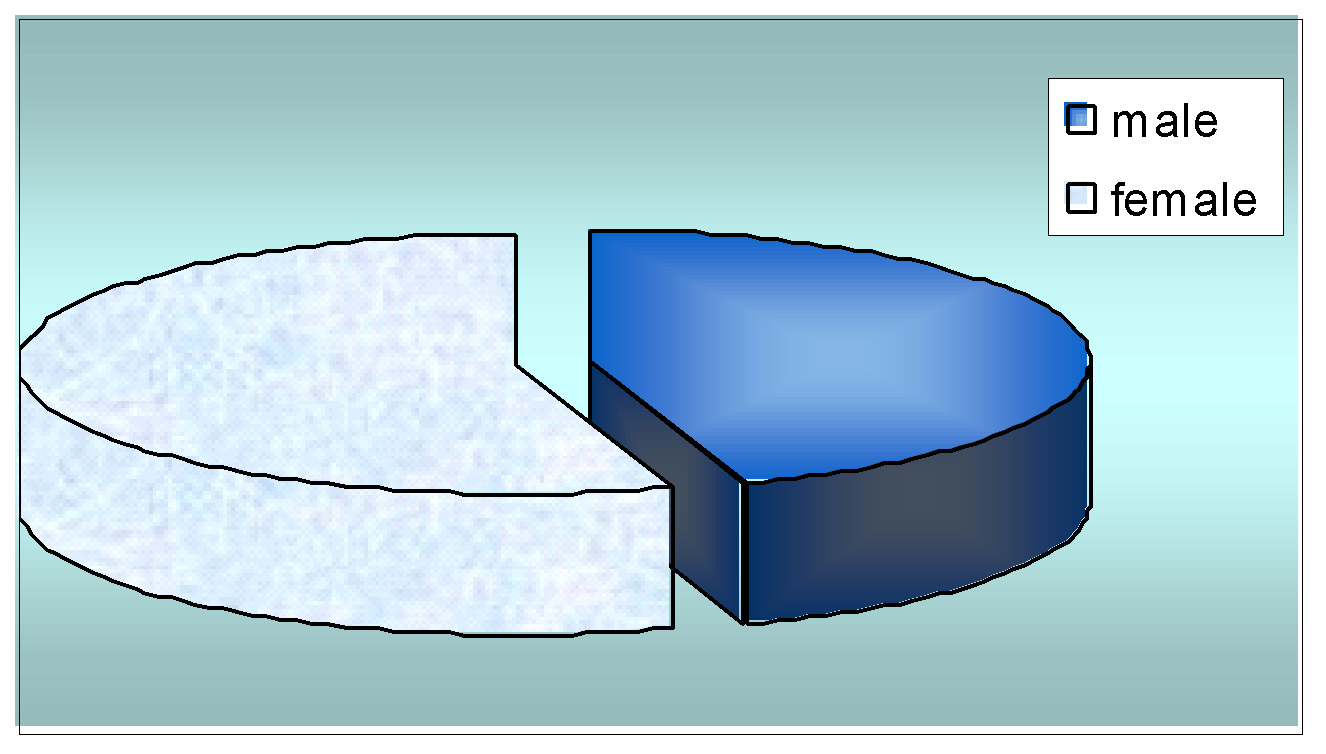
Source: – Self generated from collected primary data.
Questions 2 – The respondents were asked to state their age
None of the respondents was 15 or less; however, about 3.297% was 16-20, 4.396% was 21-25, 38.46% was 26-30 , 28.57% was 31-39, 8.79% was 40-4, and 16.48% was 50+.
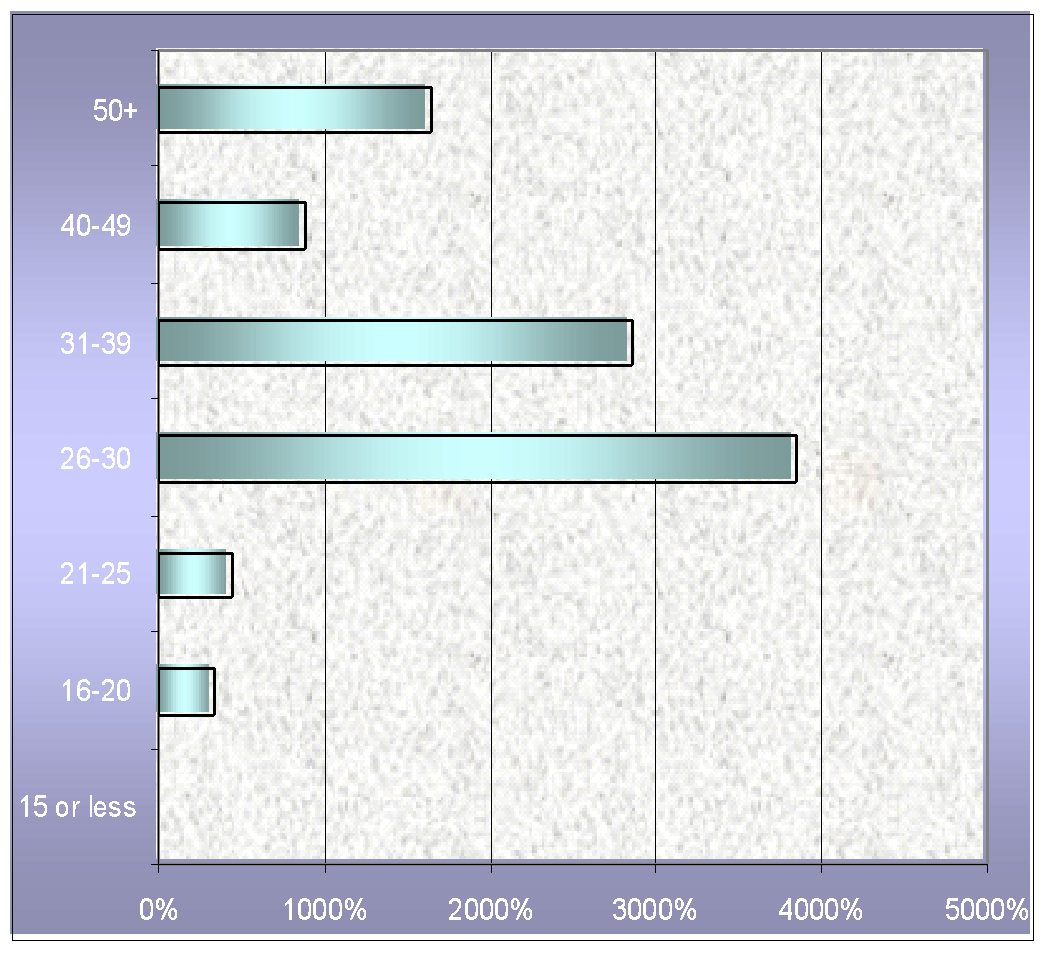
– Source: – Self generated from collected primary data.
Questions 3 – How many times have the respondents travelled by plane this year
About 4.396% of the respondents travelled 0 times, 84.62% travelled 1-2 times, 5.495% travelled 3-4 times, and 5.495% travelled 5-6 times, whereas none travelled 7-8 or 9 times+.
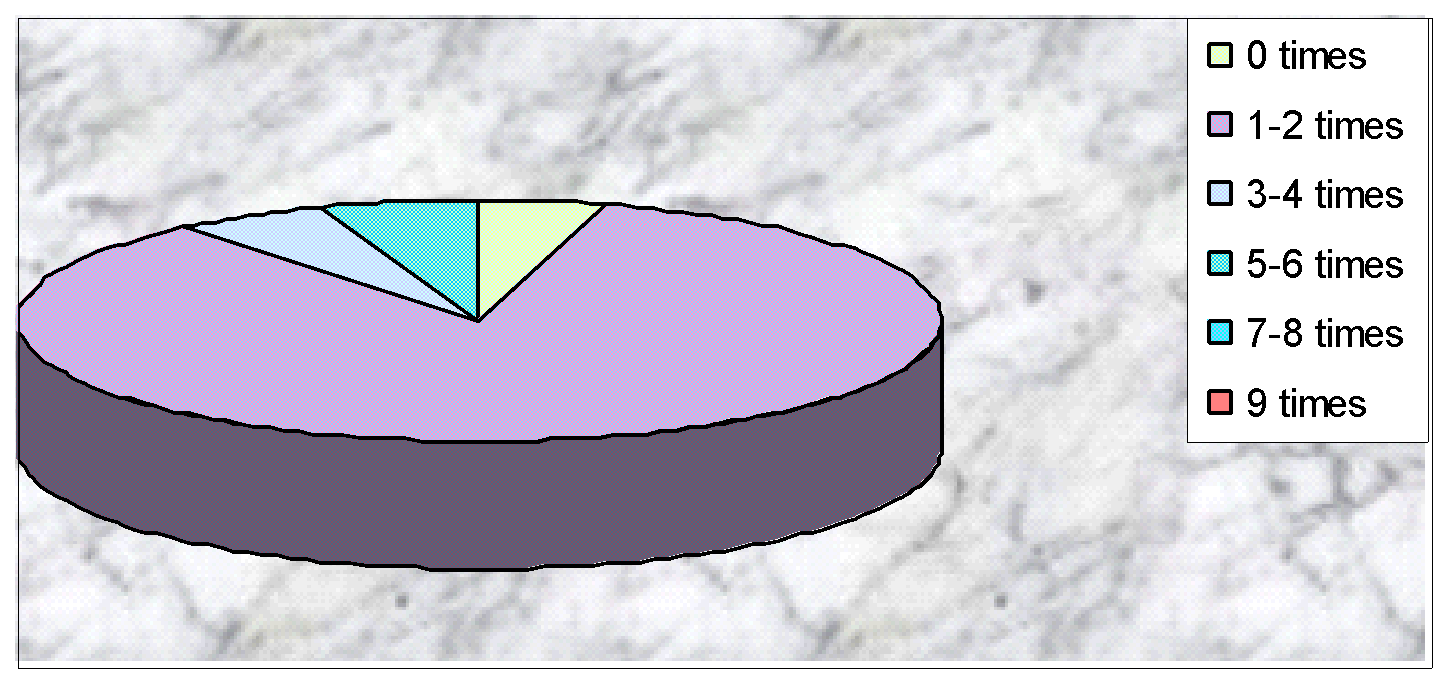
Source: – Self generated from collected primary data.
Questions 4 – How many times have the respondents flew with Cathay Pacific Airways this year
Among those who travelled by air this year, 40.66% travelled 0 times, 50.55% travelled 1-2 times, 5.495% travelled 3-4 times, and 3.297% travelled 5-6 times.
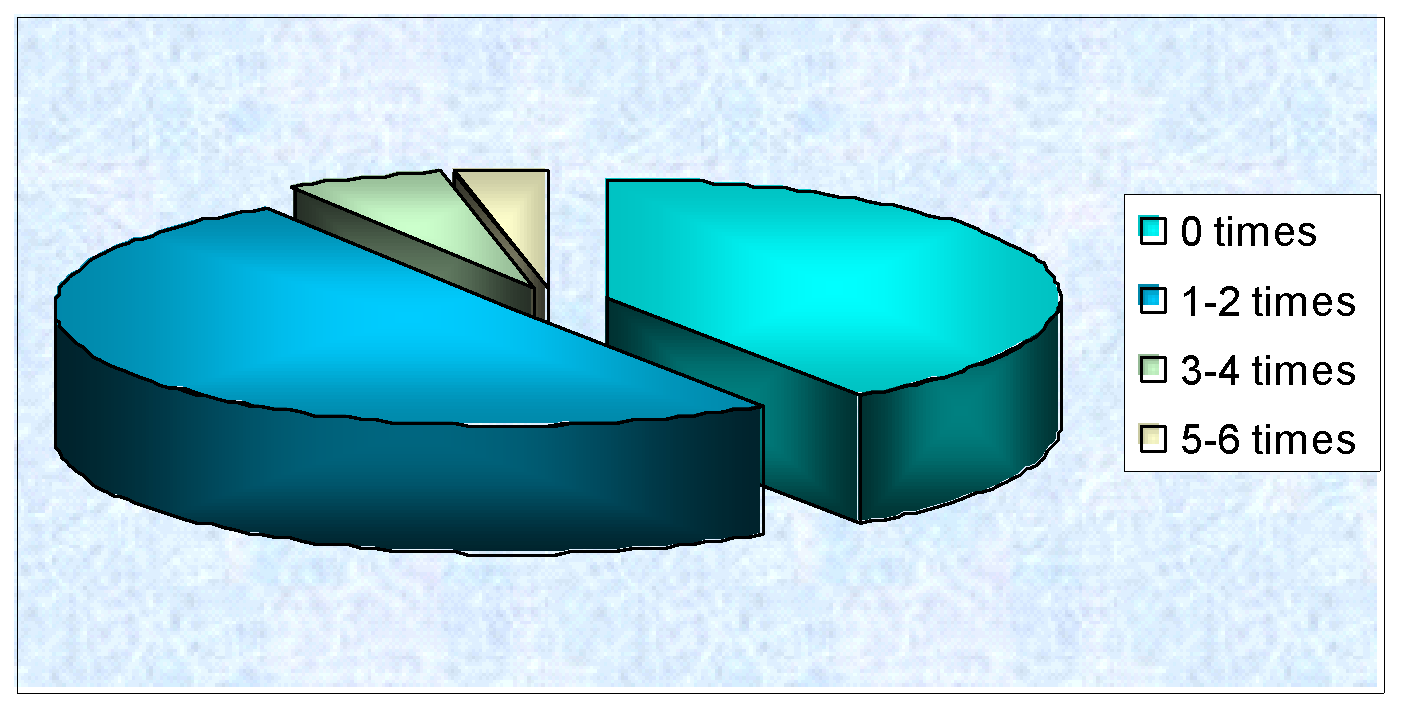
Source: – Self generated from collected primary data.
Questions 5 – What was the main purpose of the respondents to travelling
About 7.692% travelled for business purposes, 68.13% for tourism, 14.29% for visiting friends & relatives, 5.495% for studying aboard, and 4.396% for other purposes.
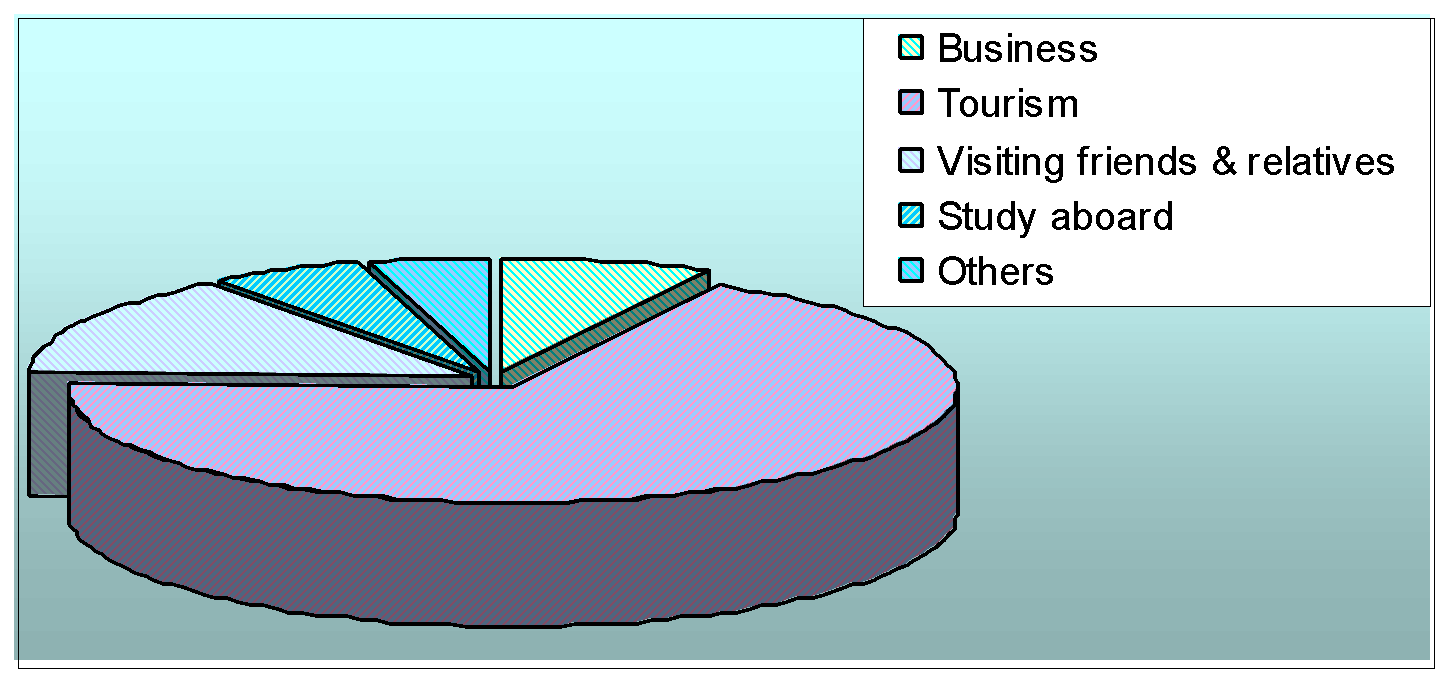
Source: – Self generated from collected primary data.
Questions 6 – Are the respondents currently members of any Frequent Flyer Programs
Approximately 70.33% said “yes,” and 29.67% said “no” to this question:
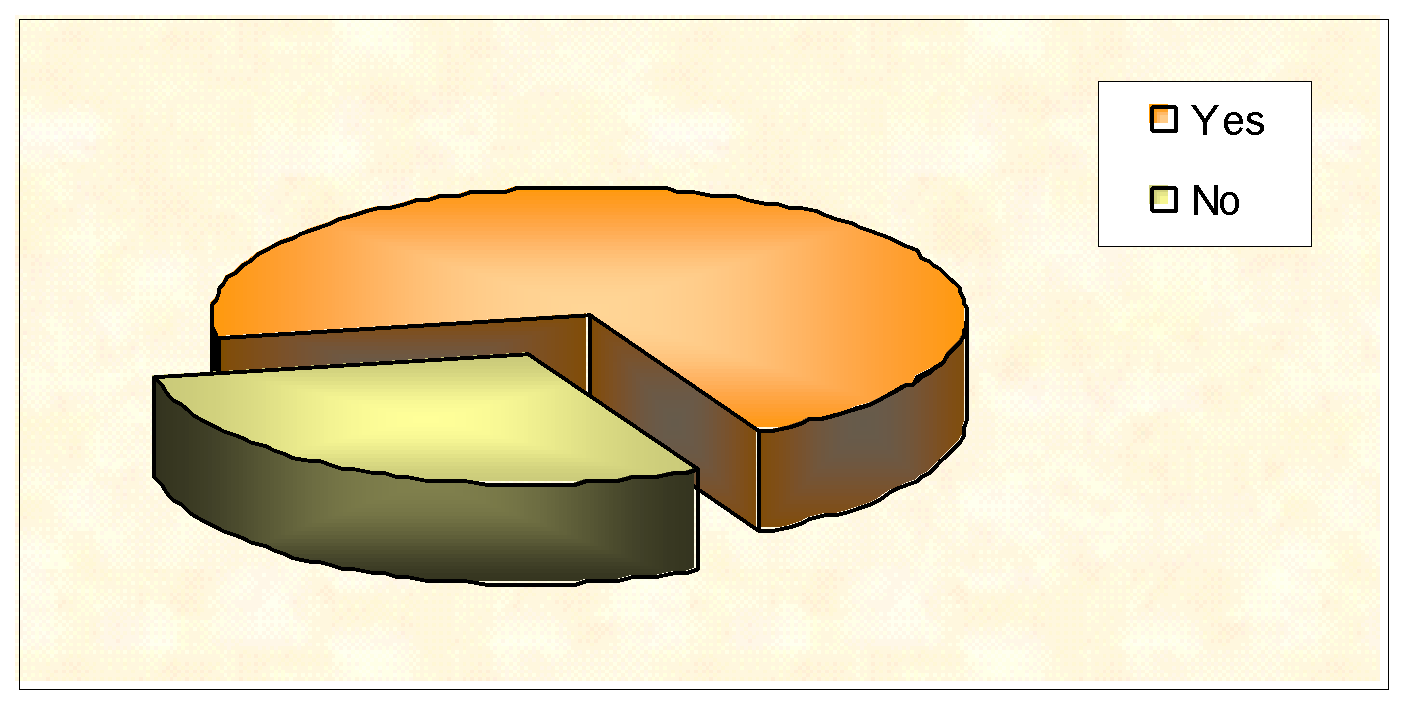
Source: – Self generated from collected primary data.
Questions 7 – If yes, the respondents were asked to select or state which loyalty programs have they joined
About 8.79% of the respondents joined the Marco Polo Club, 56.04% joined Asia Miles, 1.099% joined Oneworld partner British Airways, 1.099% joined Oneworld partner Qantus, 1.099% joined Oneworld partner Japan Airlines, 2.198% joined Star Alliance Air China, 2.198% joined Star Alliance Thai Airways, and 4.396% joined others like Air miles; however, the rest 23.08% people did not join anything.
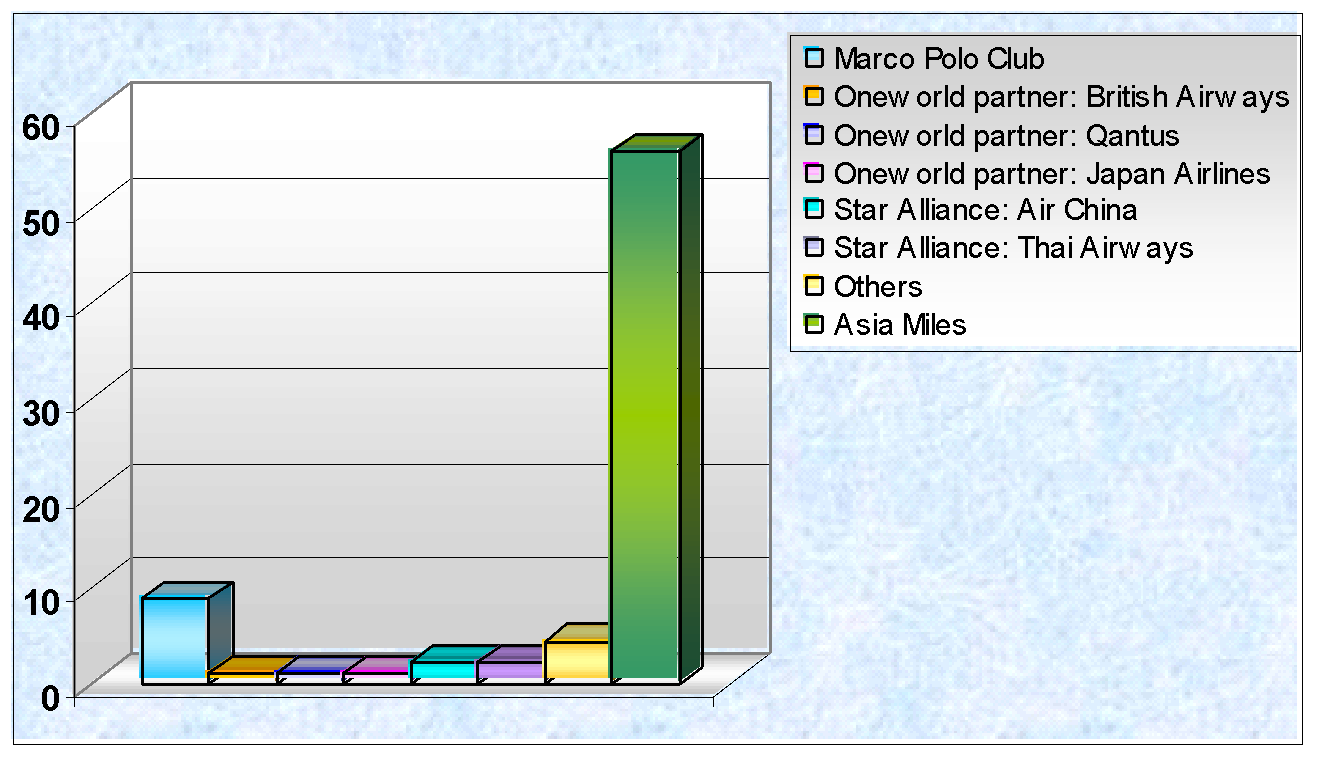
Source: – Self generated from collected primary data.
Questions 8 – Do the respondents always choose to travel with the preferred airline regardless of other airlines’ promotional offers
Approximately 18.68% said “yes,” and 81.32% said “no” to this question:
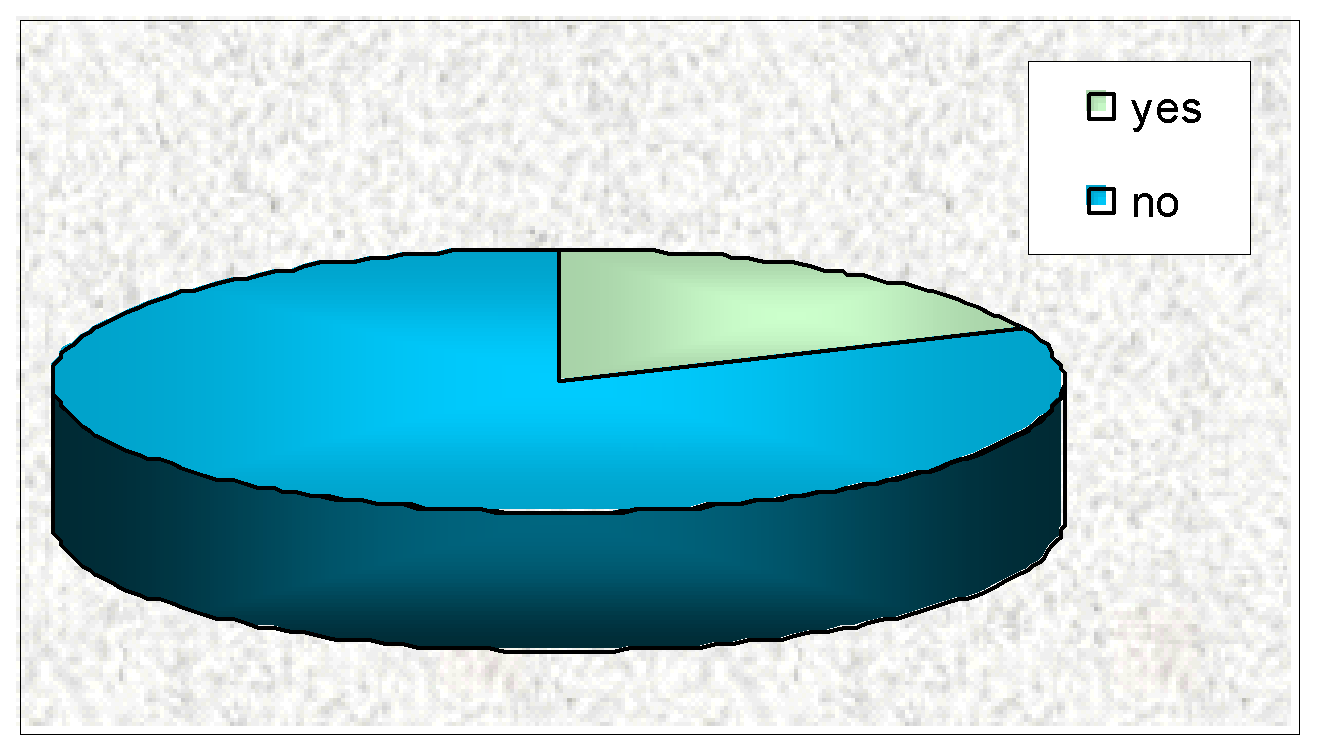
Source: – Self generated from collected primary data.
Questions 9 – What do the respondents consider when choosing which airline to travel with
The responses include the following:
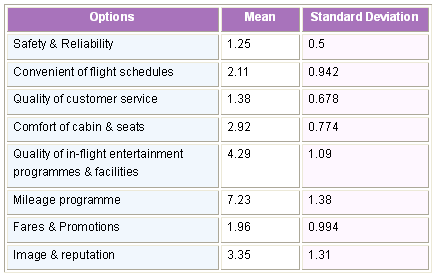
Source: – Self generated from collected primary data.
Questions 10 – What was your main reason for choosing Cathay Pacific over the other airlines
According to the view of the respondents, safety and reliability, suitable flight schedules, and good customer service are the prime reasons to select Cathay Pacific Airline. Therefore, seventy eight customers ticked in first option and seventy-one customers selected in second option while only few customers concentrated on the comfort of cabin & seats and other issues.
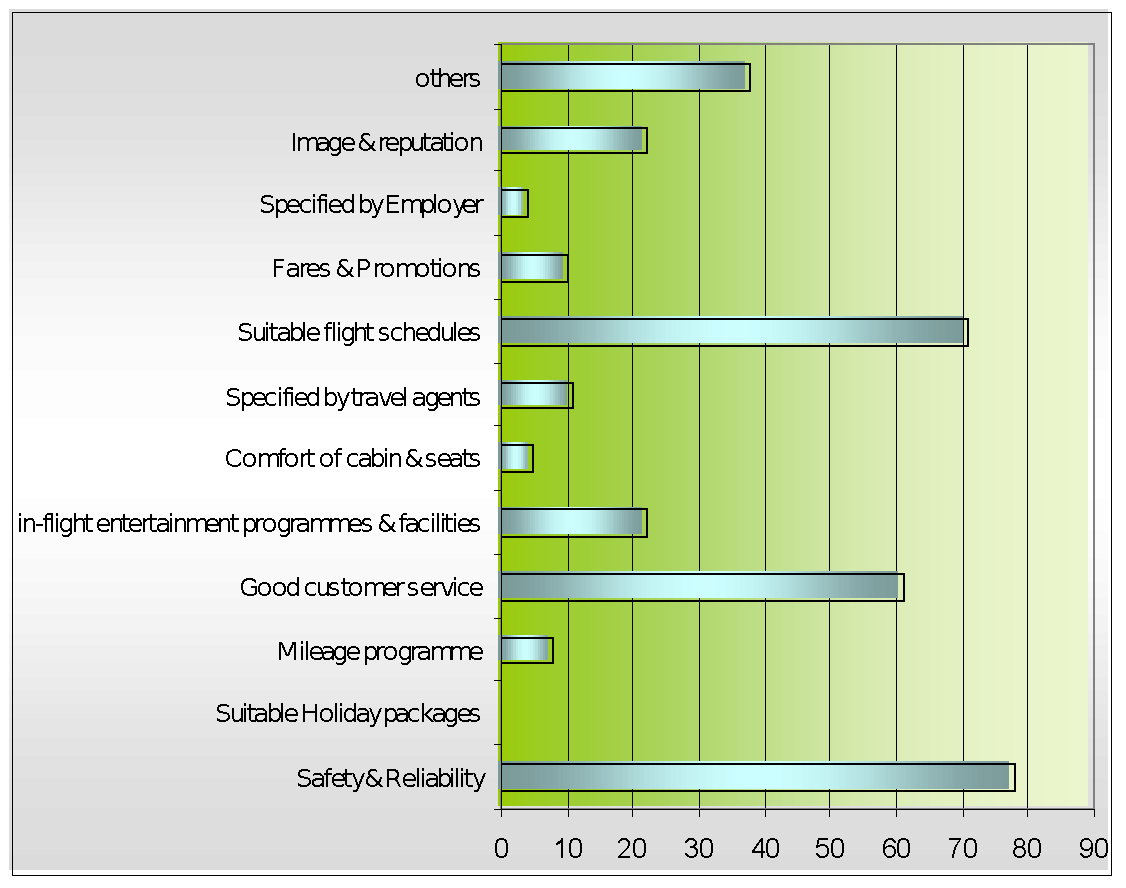
Source: – Self generated from collected primary data.
(From questions 11 to 21, the respondents were asked to rate their satisfaction level to the quality of the following services provided by Cathay Pacific):
Questions 11 – Convenient of flight schedules & frequencies
Almost 5.495% was very satisfied, 61.54% was mostly satisfied, 30.77% was acceptable, and 2.198% was somewhat dissatisfied, whereas none was extremely dissatisfied:
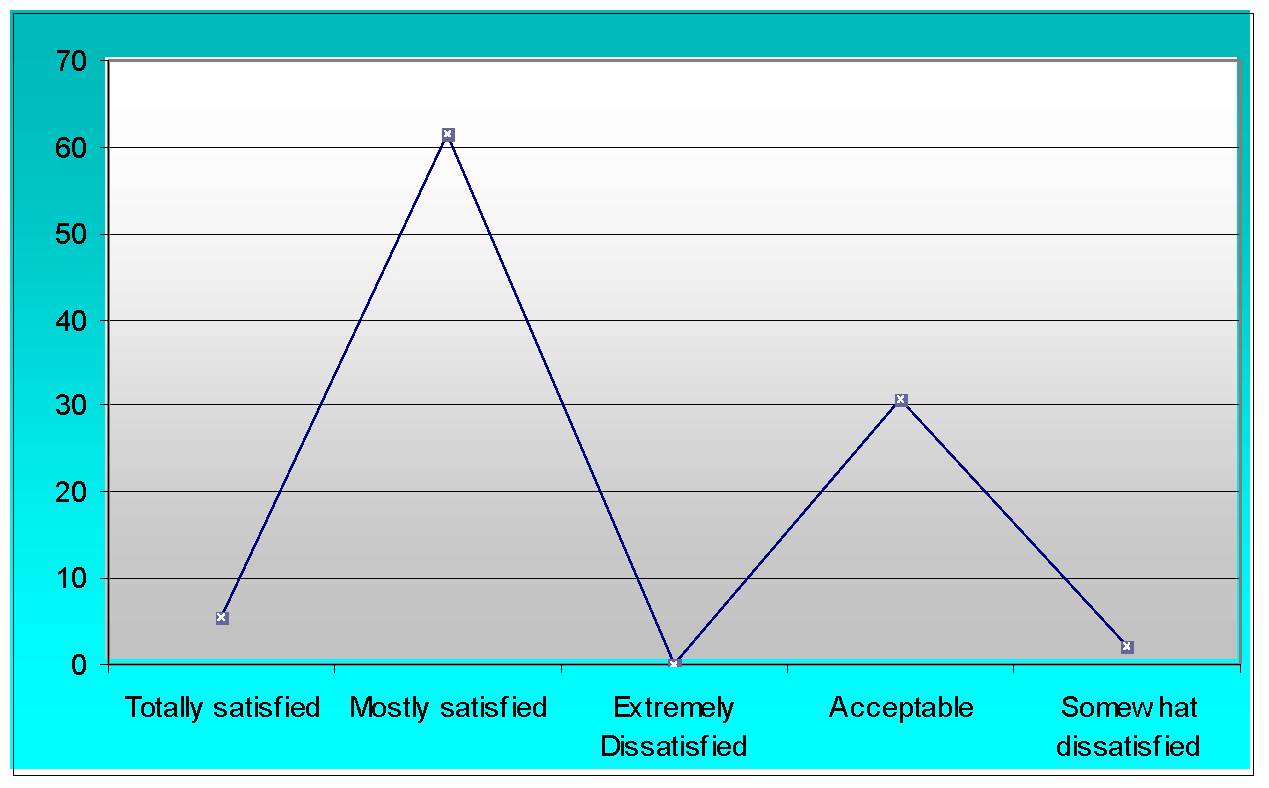
Source: – Self generated from collected primary data.
Questions 12 – Professionalism, Courtesy of staff (attentiveness, friendliness, knowable, efficiency)
About 13.19% was totally satisfied, 50.55% was mostly satisfied, 32.97% selected acceptable, 3.297% was somewhat dissatisfied, and none were extremely dissatisfied.
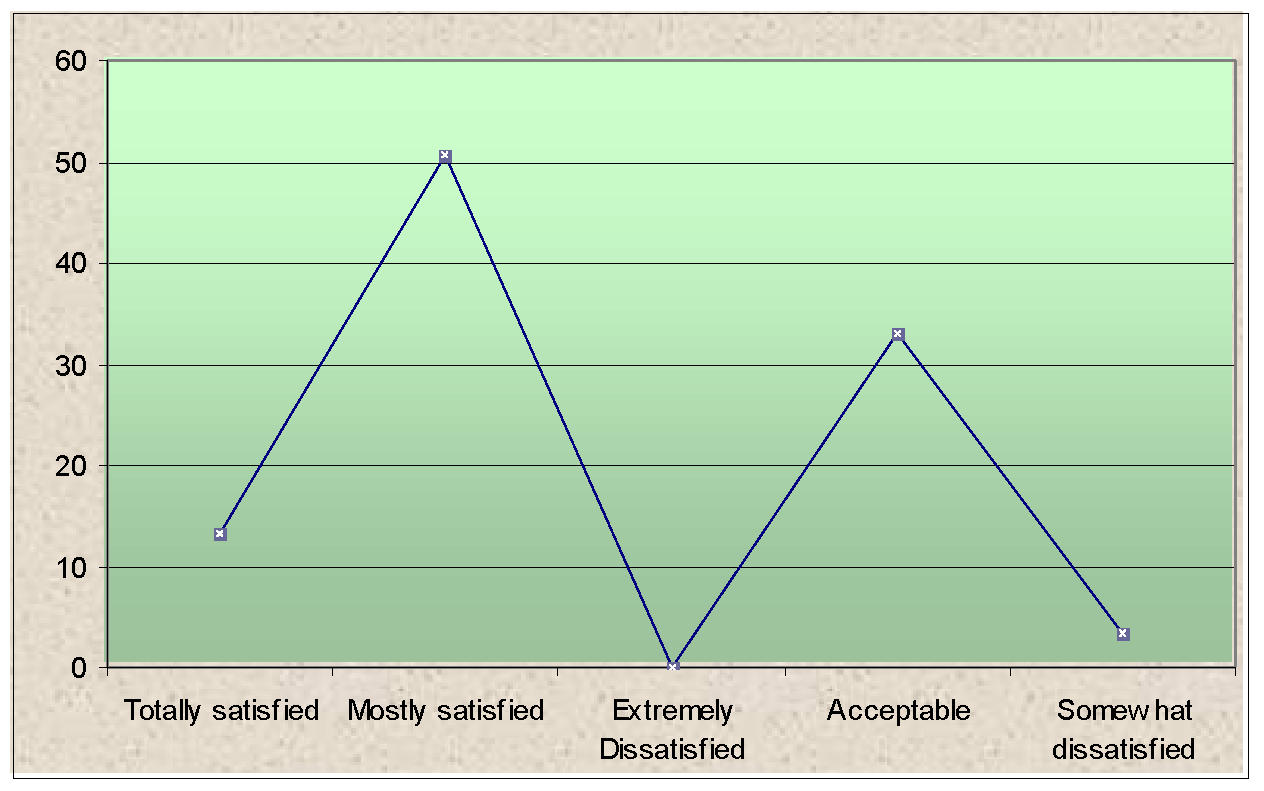
Source: – Self generated from collected primary data.
Questions 13 – Efficiency of check-in process at counter
Approximately 14.29% was totally satisfied, 62.64% was mostly satisfied, 23.08% selected acceptable, and none were somewhat dissatisfied or extremely dissatisfied:
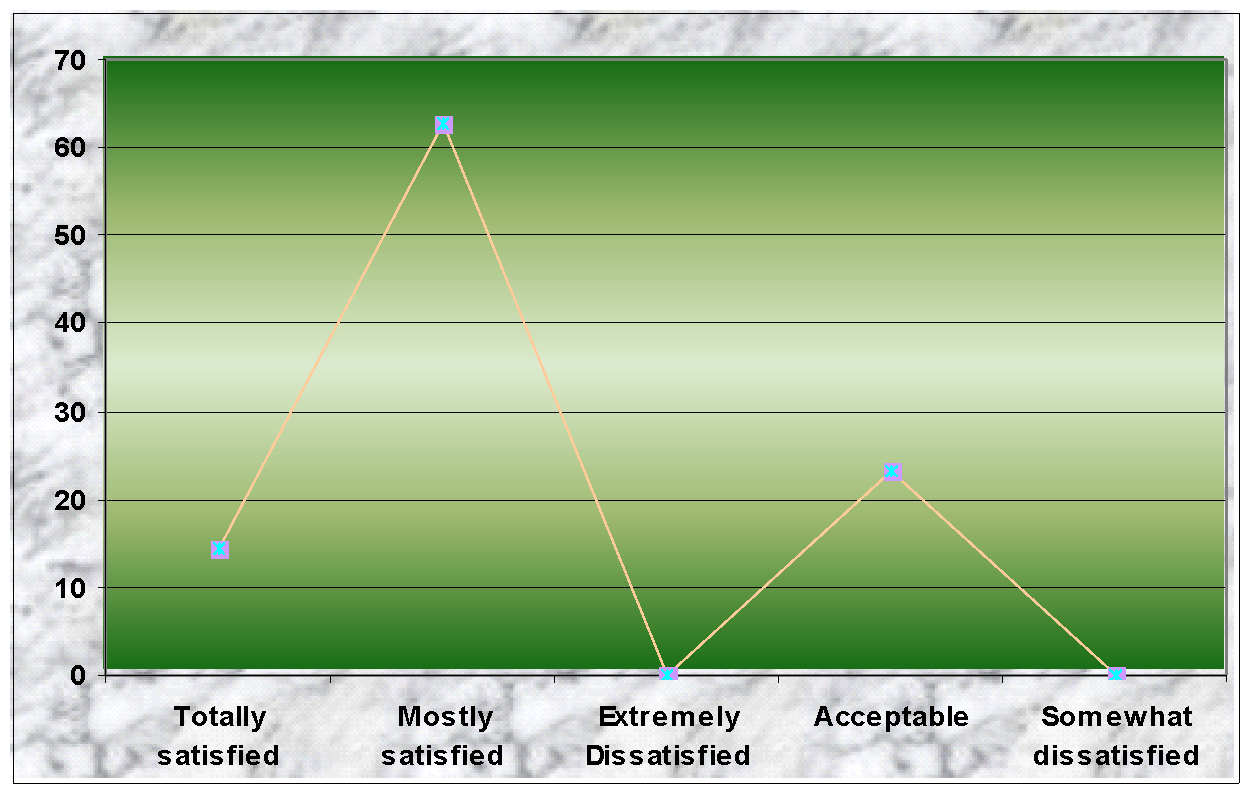
Source: – Self generated from collected primary data.
Questions 14 – Efficiency of online check-in process
About 6.593% was totally satisfied, 46.15% was mostly satisfied, 31.87% selected acceptable, 3.297% was somewhat dissatisfied, and 12.09% selected don’t know/does not apply section.
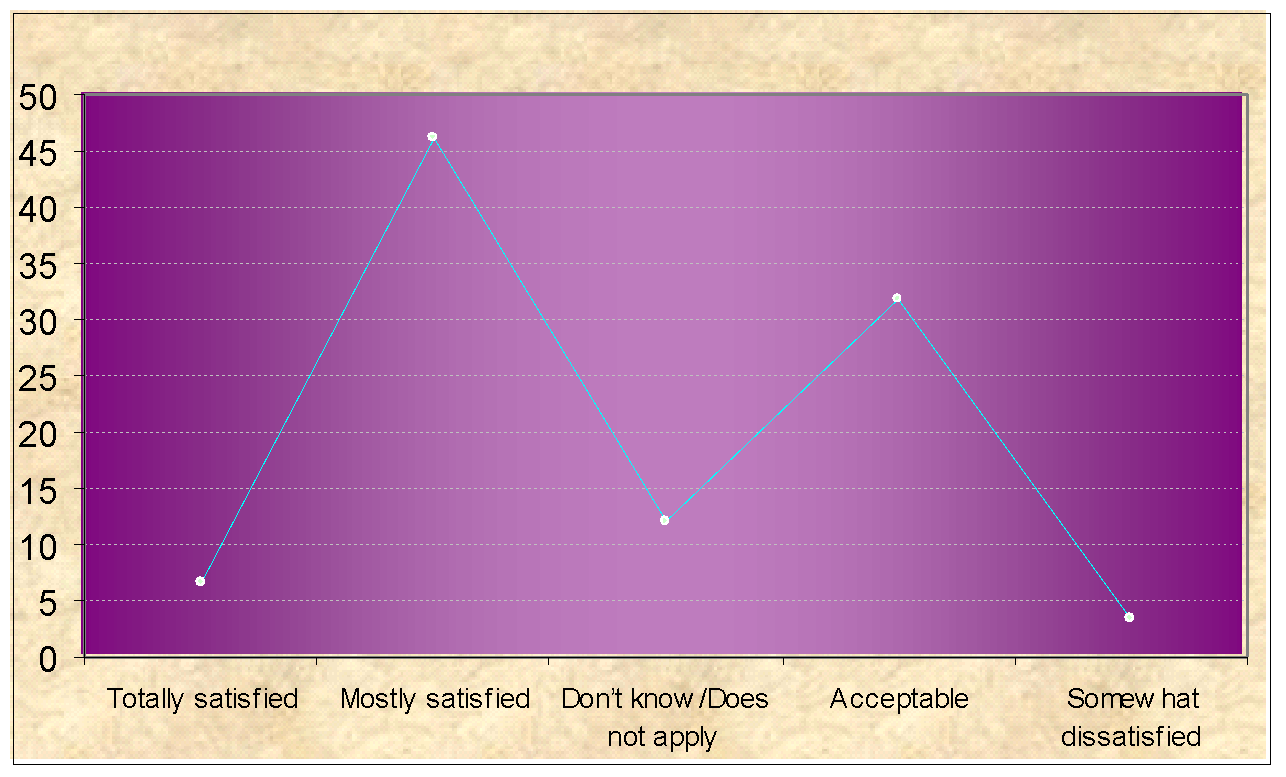
Source: – Self generated from collected primary data.
Questions 15 – Effectiveness, User-friendliness of company official website (for online booking, seat reservation, checking flight schedules, status, etc)
Almost 2.198% was totally satisfied, 43.96% was mostly satisfied, 36.26% selected acceptable, 3.297% was somewhat dissatisfied, and 12.09% selected don’t know/does not apply section.
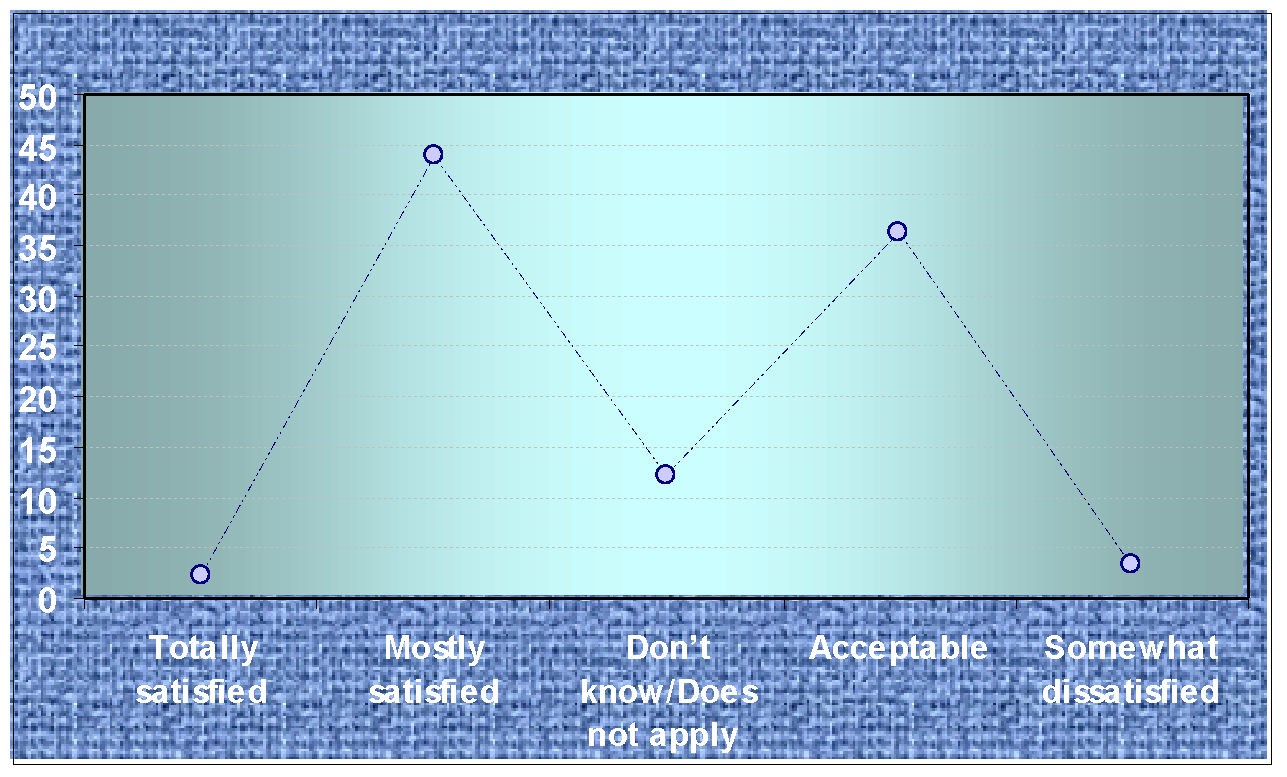
Source: – Self generated from collected primary data.
Questions 16 – Prompt response to customers’ requests /complaints
Approximately 6.593% was totally satisfied, 46.15% was mostly satisfied, 31.87% selected acceptable, 3.297% was somewhat dissatisfied, and 12.09% selected don’t know/does not apply option.
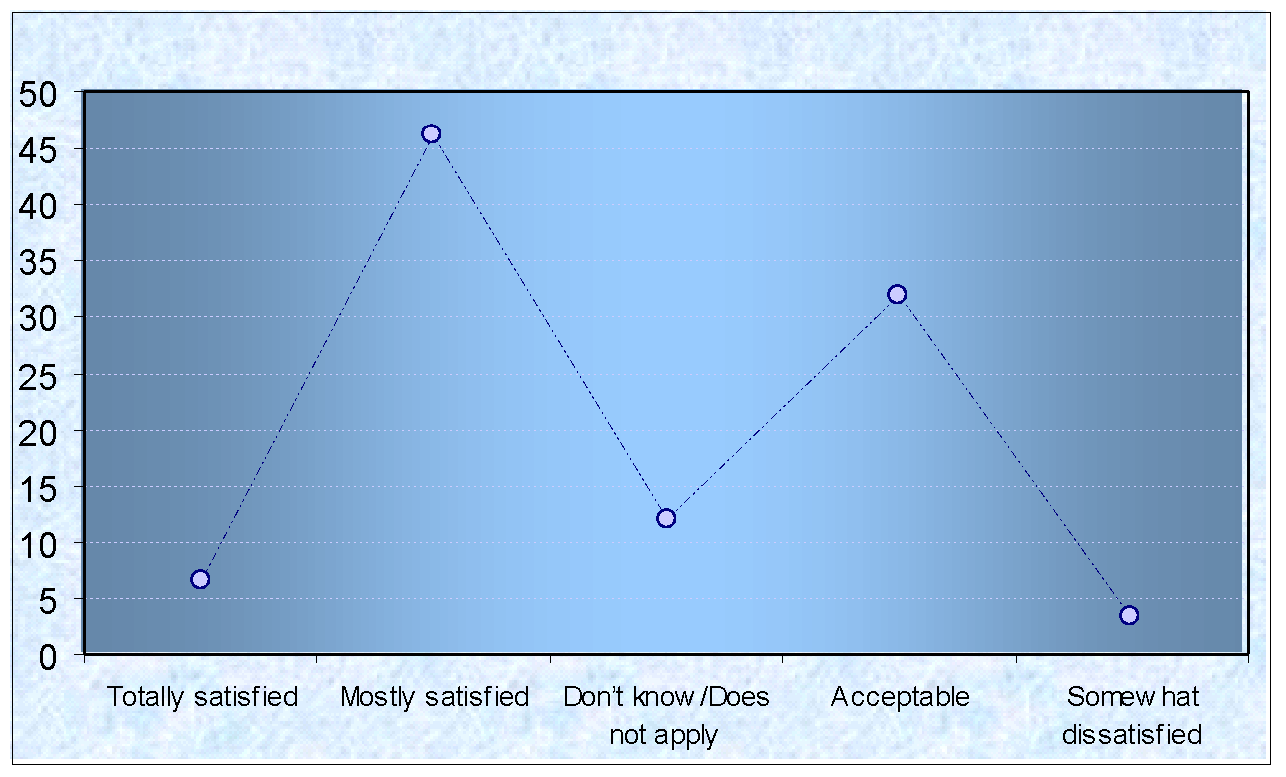
Source: – Self generated from collected primary data.
Questions 17 – Punctuality of flights (Departures & Arrivals)
Approximately 2.198% was totally satisfied, 48.35% was mostly satisfied, 40.66% selected acceptable, 5.495% was somewhat dissatisfied, and 3.297% selected extremely dissatisfied option.
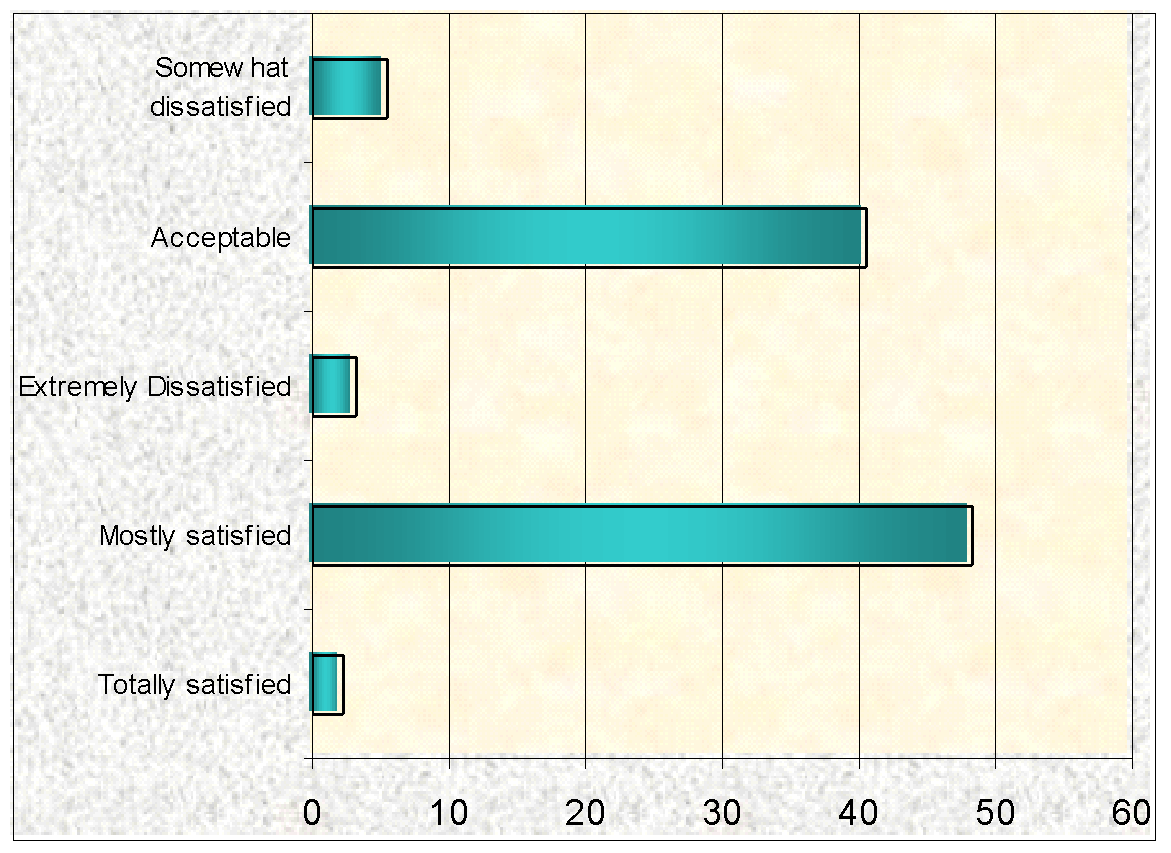
Source: – Self generated from collected primary data.
Questions 18 – Comfort of journey (cleanness of cabin, spacious seats, quality of in-flight facilities & entertainment programmes)
Totally satisfied were about 2.198%, mostly satisfied were 49.45%, acceptable were 42.86%, and somewhat dissatisfied were 6.593%:
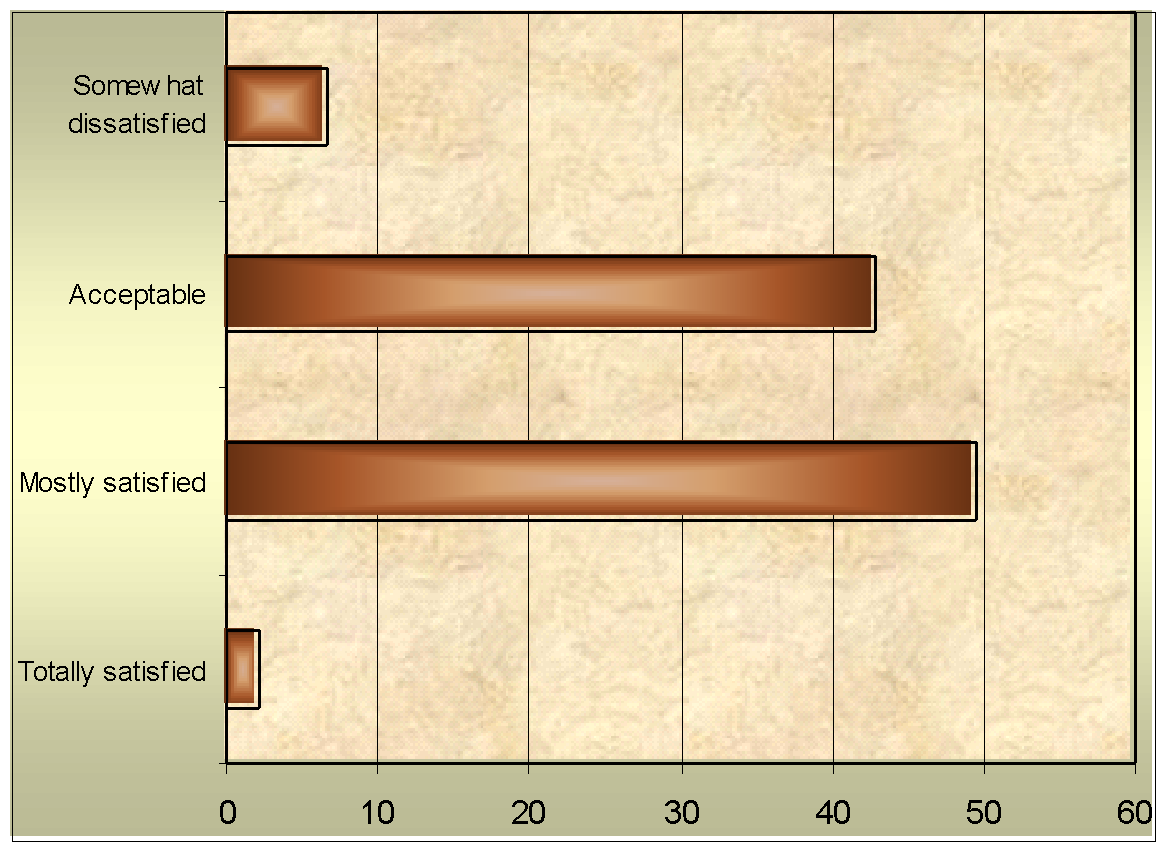
Source: – Self generated from collected primary data.
Questions 19 – Quality & variety of food & beverage onboard
Totally satisfied were about 9.89%, mostly satisfied were 47.25%, acceptable were 38.46%, and somewhat dissatisfied were 4.396%:
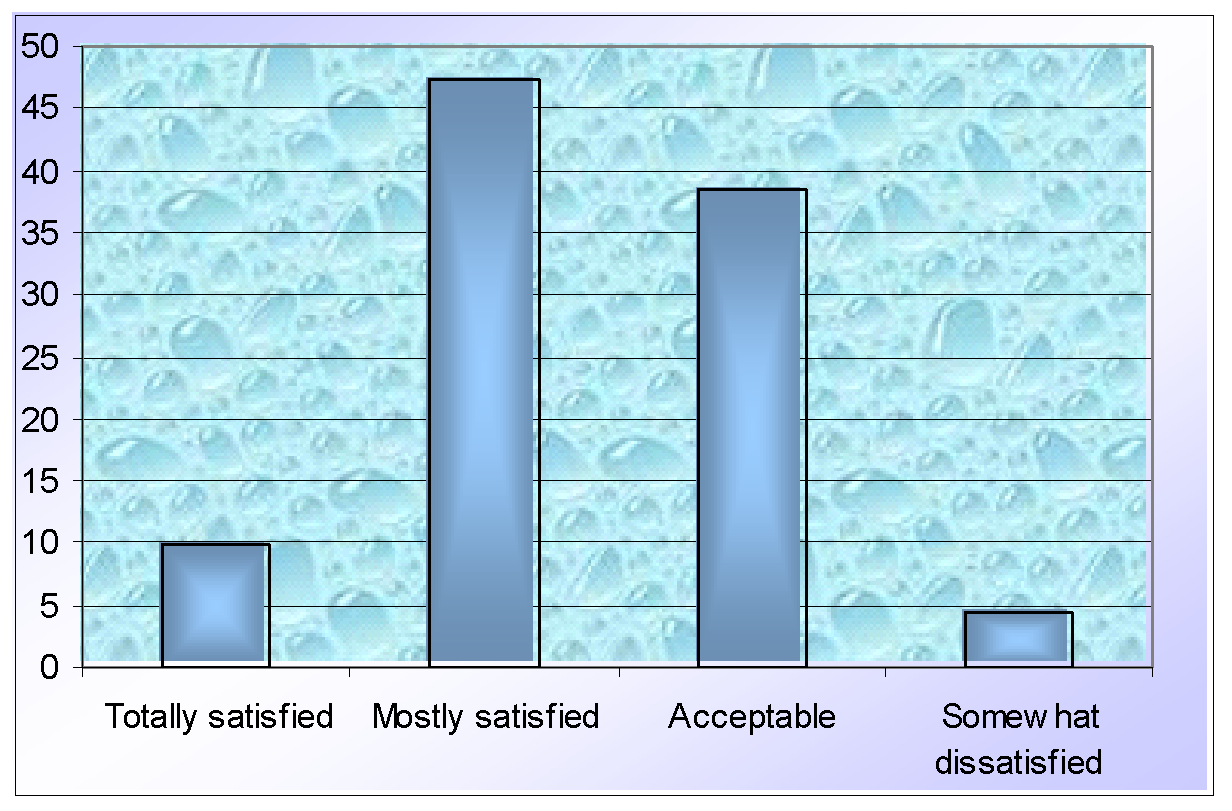
Source: – Self generated from collected primary data.
Questions 20 – Hotlines – Ability to contact CX/ Marco Polo Club directly & quickly
Approximately 5.495% was mostly satisfied, 26.37% selected acceptable, 5.495% was somewhat dissatisfied, 2.198% selected extremely dissatisfied, and 66.67% selected don’t know/does not apply option.
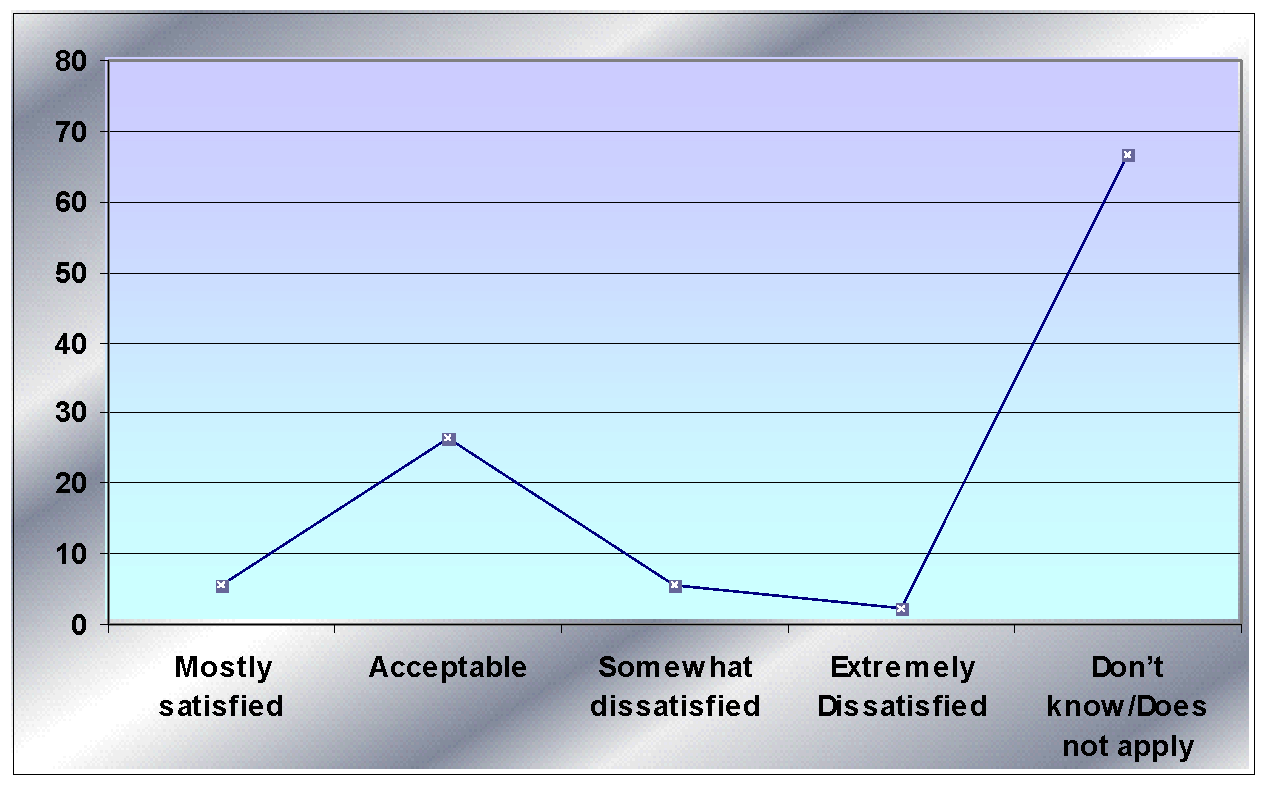
Source: – Self generated from collected primary data.
Questions 21 – Communications (flight/ promotion updates via emails, eNewsletter, SMS, Facebook, Twitter etc)
Approximately 10.99% was totally satisfied, 32.97% was mostly satisfied, 18.68% selected acceptable, 1.099% was somewhat dissatisfied, and 36.26% selected don’t know/does not apply option.
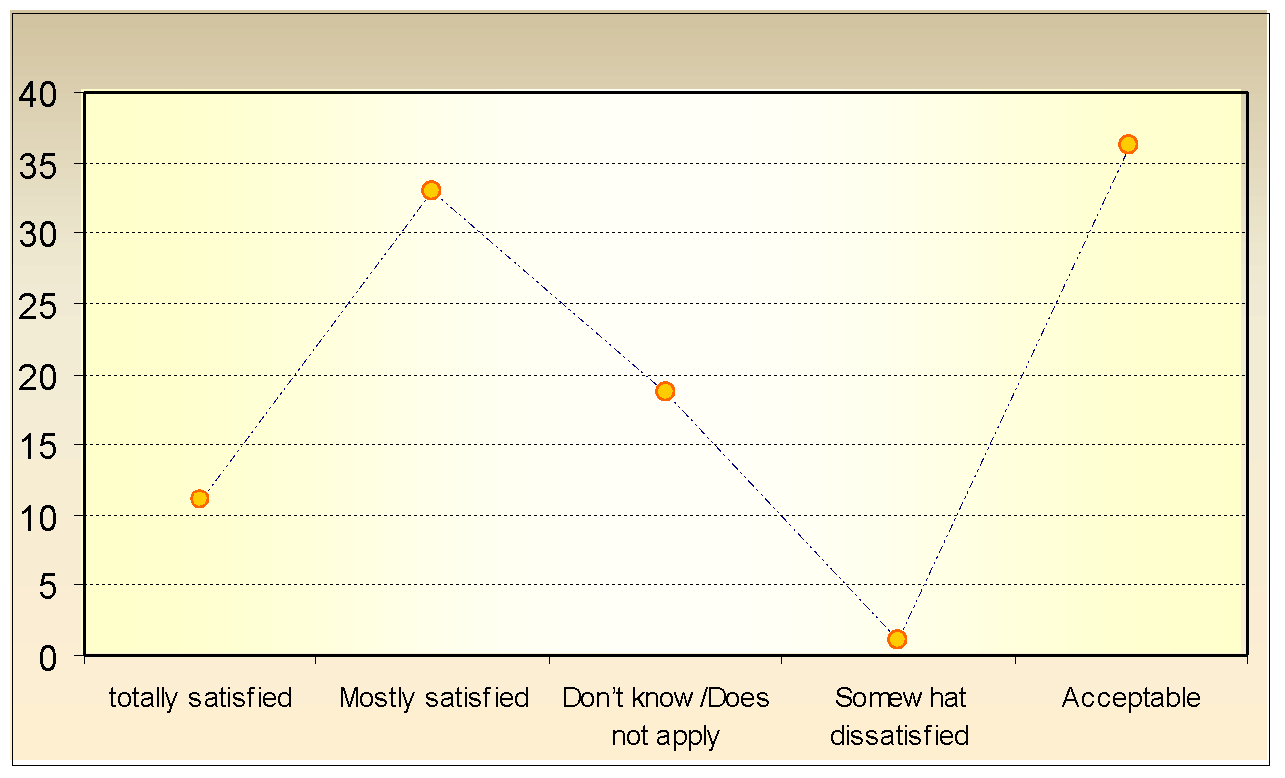
Source: – Self generated from collected primary data.
Questions 22 – How likely are the respondents to travel by Cathay Pacific again in the future?
About 43.96% was very likely to travel by Cathay Pacific, 30.77% was likely, 23.08% was neutral, 2.198% was unlikely, but none was very unlikely.
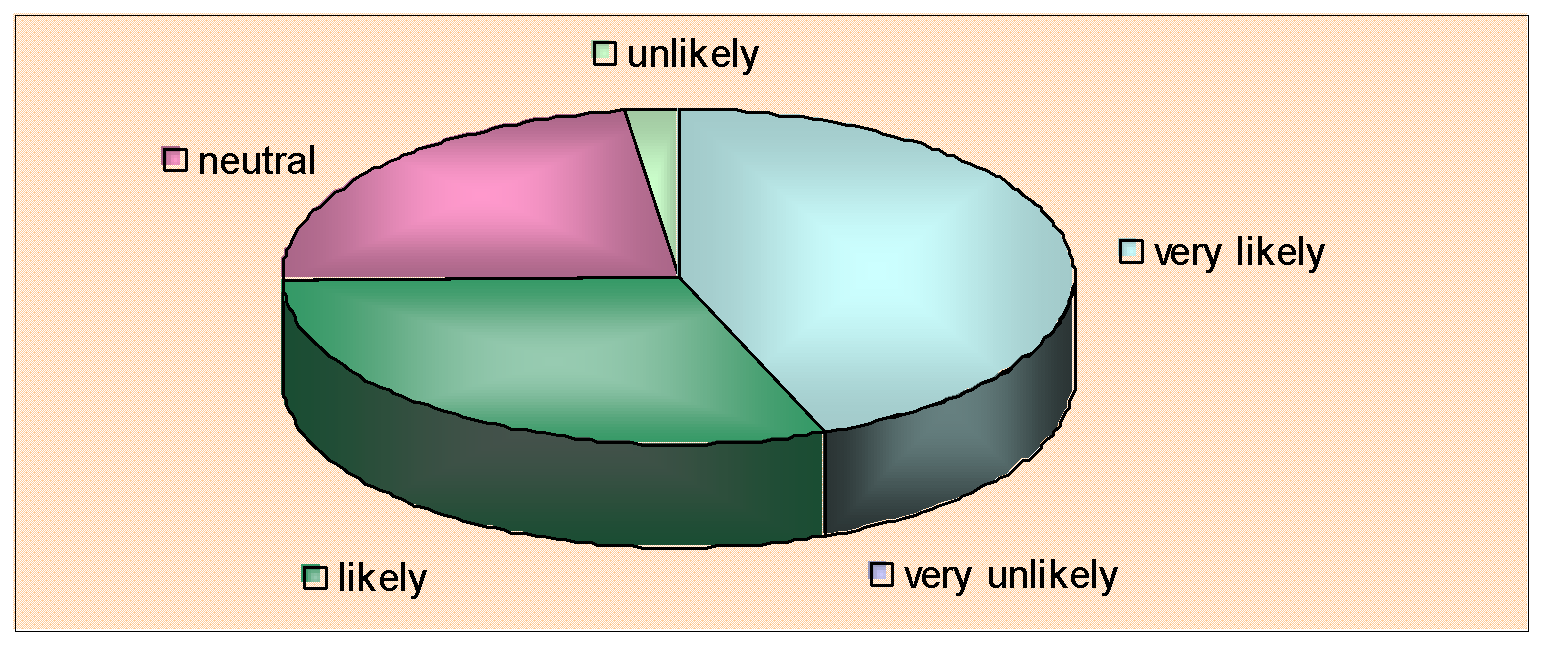
Source: – Self generated from collected primary data.
Questions 23 – Would the respondents recommend Cathay Pacific Airways to other people?
Approximately 97.80% said “yes,” and 2.198% said “no” to this question:

Source: – Self generated from collected primary data.
Section B: Open Questions for employees of Cathay Pacific Airline
Questions 1: What was of significance for Cathay Pacific Airlines when implementing CRM
Answer: The purposes of the Cathay Pacific Airline were to strengthen brand awareness and to increase loyal customer base to maximise profits and to take action to the depressed tourism sector by implementing effective customer relationship management (CRM) system in regular practice of the company. In addition, this company was intended to do something for the unhappy travel market by restructuring strategies where CRM played vital role to increase customers’ attention to the airline industry particularly to the Cathay Pacific Airline.
Questions 2: What communication systems or channels Cathay Airline use to interact with customers and why Cathay Pacific Airline uses these channels
Answer: According to the response of the employees of Cathay Pacific Airline, this company uses advance, latest and sophisticated global electronic communication system to communicate with the employees and the customers; in addition, it has 24-hour call centre, dynamic website and integrated software and several useful tools. The employees stated that this company has already introduced new AVOD (Audio/Video on Demand) service that offers about hundred movies, five hundred TV programmes in different languages, eight hundred and eighty-eight CDs with alternative soundtracks, and twenty-two radio channels for the travellers on the aircraft; in addition, it has arranged special entertainment facilities for the customers of long-haul route.
Questions 3: How CRM play effective role to save the company from recession
Answer: In 2003, this company regained its confidence by implementing effective CRM Campaign in Hong Kong and stimulating the sleeping market, but it should rely or focus on other strategies to save the company from recession because the customers’ purchasing power had reduced for global financial crisis.
Questions 4: Do you believe Cathay’s CRM is able to change customer behaviour, which can increase profit
Answer: The employees of the Cathay Pacific Airline have partially agreed with the statement though they would like to address on several issues related with ability of CRM system to change customer behaviour, such as, purchasing power of the customer, political and social factors and so on. However, the respondents argued that CRM is one of the most effective tools to develop relationship with the customers and increase loyal customer base, but it may not be effective if company only relies on the old technology and communication strategies; therefore, it has to adopt new multimedia marketing strategy along with implement new CRM solutions.
Questions 5: Why does Cathay Airline provide prompt feedback to the customers’ complain
Answer: The employees of this company stated that Cathay Airline provides prompt feedback to the customers’ complain in order to relax the customers from any tension related with travel; otherwise, they become anxious and reluctant to use the service from Cathay Pacific Airline in the future. However, the respondents further addressed that prompt feedback helps the company to hold existing customers and take future action by avoiding previous mistakes.
Questions 6: What are the influential factors to measure service quality of Cathay Airline
Answer: The respondents stated that there are many influential factors to measure service quality of this company, such as, cabin facilities, behaviour of the employees, pricing strategy, special offerings, and customer care in terms of less lost bags, and smaller amount cancellations rate and so on. However, the employees further stated the report of Skytrax (2012) that this company won World’s Best First-Class Airline Seat award in 2011
Questions 7: To what extent you agree that the customers of Cathay Airline are loyal and take the service repeatedly or do they recommend others to take its service
Answer: The respondents argued that the company frequently announces special offer for the old customers and reduce price for the loyal customers; it also offers special pricing for the friends and relatives of the loyal customers; therefore, they like to recommend others. On the other hand, the customers are highly satisfied with the products and services of the company, which also influenced them to recommend others to take service; so, all respondents have strongly greed with the statement.
Questions 8: How do you measure customer satisfaction rate of Cathay Airline
Answer: Customer satisfaction is one of the most important issues to the companies to measure their success; therefore, the management team of Cathay Pacific Airline concentrates on the customers’ feedback regarding quality of services, and conduct survey to know the opinion of the customers. However, the employees argued that the SKYTRAX Awards considered the global benchmark of airline excellence because it provides awards considering the survey reports from more than 18.80 million airline travellers of hundred different countries and SKYTRAX Awards consider the service quality of two hundred airlines in the world.
At this point, the respondents argued that the customers of this company are highly satisfied with the products and service quality, effective communication system, human resources, airport operations in Hong Kong, customer care and so on; as CPA has been awarded the World’s Best Airline for three times.
Questions 9: How competitors of this company gains competitive advantages using effective CRM tools
Answer: According to the view of the respondents, the major competitors of the Cathay Pacific Airlines are China Eastern Airlines Corporation (CEA), China Southern Airlines (CSA), and Singapore Airlines Limited, etc. However, the management team of this company compares the CRM tools of different airlines and measure the effectiveness of these tools in order to implement new options in the entire communication system of Cathay Pacific and gain competitive advantages as well.
Questions 10: What is your opinion regarding existing CRM process of Cathay Pacific Airways and Do you have any suggestions for further change
Answer: Present CRM process of this company is outstanding and well- developed; however, the respondents suggest hybrid cloud computing, employed human resources to develop customer care, introduction of new system time-to-time, updates the version of the software and contract with outsource companies, and so on.
Research Questions
What is the best CRM approach designed and practiced in the global airlines industry
As analysed in the literature review section, currently Social CRM is the best CRM approach designed and practiced in the global airlines industry because of the cost efficiency, flexibility, and more customer engagement it provides.
How the effectiveness of CRM approach are measured
The literature review section has analysed several ways by which the effectiveness of CRM approach are measured; however, macro and micro – level procedural approaches are mainly used to measure the effectiveness of CRM approach.
How the CRM approach could improve the performance measure in the service industry
As discussed in the literature review, adoption of social CRM system is the key method by which CRM approach could improve the performance measure in the service industry.
To what extent the CRM approach of Cathay Pacific are effective
However, at this stage it is noted from the results of the survey that to what extent the CRM approach of Cathay Pacific are effective. In expressing the satisfaction level about the quality of several services provided by Cathay Pacific, a mixed reaction is received; however, most people has commented in favour of the service quality. Moreover, many respondents were likely to travel by Cathay Pacific in near future and recommend it to others. However, still a substantial portion of them is dissatisfied with the service and not too happy with the courtesy or behaviour of staff. Greater attentiveness is needed from the company regarding the improvement of CRM to satisfy this group and bring out the required success.
Conclusion
Conclusion Revisiting Objectives and Findings
To evaluate theory of CRM
CRM has quickly turned out to be one of the foremost aggressive corporate-strategies in these days and it dealt with administrative efforts to supervise company’s communications with clients; nevertheless, throughout the paper, a number of essential elements of CRM are investigated, including its evaluation, effectiveness, best practices, and importance of improvement both in context of industry and Cathay Pacific Airlines.
To find out the CRM practices of Cathay Pacific Airways
The sub objectives of this study were to generate and progress available resources to support the improvement of customer relationship management linking with customers and employees response, and to support the verdict for any improvement of customer relationship management within the aviation industry that will attract elevating number of future customers and would accelerate profitability.
The findings chapter scrutinised the customers and employees’ responses to promote the enhancement of available resources on CRM to accelerate profitability not only within Cathay Pacific, but also within the aviation industry as a whole; to summarise, this chapter noted towards the need that the companies should be more technology oriented to engage customers personally towards the business. This specific point was also discussed in the previous literature review; conversely, another sub objective of this study was to minimise the efforts and reduce complexities of existing CRM processes that are essential to support the competitive advantage for the Cathay Pacific Airline.
The results of the findings chapter show that the company still faces huge effort and great complexities on existing CRM process – so, a more simple, abridged, and easy cloud computing based CRM is necessary to gain competitive advantage, as discussed in the literature review. Moreover, the literature review aimed to conduct the best secondary research outcomes that could be done rapidly by using existing data and information to facilitate the aviation industry to re-engineering their CRM-approach and contribute new scholars and academia for further research in this area.
To evaluate the relationship, impact of CRM with the company
However, the key objective of the paper has remained with analyzing the impact of customer relationship management in the airline industry and focusing on its contribution to the success of the businesses, especially evaluating the success of its practice in context of Cathay Pacific Airlines. In conducting the survey to identify the level of CRM, success and contribution in terms of this business, a number of findings and results were identified, which had assisted to acknowledge the purpose.
To summarize, the research findings have revealed that although the CRM program of the Cathay Pacific Airline had significant contributions in its performance, it needs further improvement in terms of cost efficiency, technological advancement, and overall customer involvement for a highly successful outcome.
Conclusion Revisiting Research Questions
The research questions were analysed accordingly in the literature review section as well as in the data analysis chapter. As suggested in the literature review chapter, currently, CRM 2.0 or social CRM is the best CRM approach designed and practiced in the global airlines industry. Conversely, a range of procedures are noted through which the effectiveness of CRM approach are measured; in addition, the researcher has put forward directions regarding how the CRM approach could improve the performance measure in the service industry.
On the other hand, the conducted survey has revealed the extent to which the CRM approach of Cathay Pacific are effective by analysing the data and response from the employees and customers of the company in the findings chapter and identified that although the CRM-practice is modified in the company, further IT-integration and modernisation are required to gain competitive advantage.
However, it is expected that the recommended strategic implementations outlined below possess full potential to reconcile present inadequacies of CRM infrastructure of the company and convey a customer involvement that could not only enhance the performance of Cathay Pacific in the industry, but also be a framework that will be admired and followed by existing competitors in the global market
Recommendations
It is notable to state that currently, Cathay Pacific Airlines possesses a satisfactory CRM infrastructure as discussed in the previous sections of this paper. In order to compete in this era of globalization, where stiff competition arises from a number of large and small-scale airlines, it is crucial to integrate a highly efficient, less costly, and most contemporary CRM program; however, a number of recommendations for the company are outlined below –
- The strategy makers of Cathay Pacific Airlines should allocate more budgets in its IT infrastructural projects to further development of its cloud computing services in order to operate closely to manage customer relationship. It is highly recommended to switch on and adopt hybrid cloud computing for data storage and customer relationship management, which will give the company a chance to enjoy both public and private cloud computing simultaneously and operate through smart capacity utilisation. At the same time, this will give Cathay Pacific Airlines an opportunity to make use of cost effectiveness, high efficiency, and better customer relationship to obtain the benefits of sharing data and feedback with the clients and stakeholders to managing them resourcefully within the organization, which would lower the outlay of sharing feedback both externally and internally
- The administrative bodies at the customer service department must focus on the fact that communicating with the clients through online chat with social networking sites, as a medium will greatly help the company to establish better relationship with the clients in terms of involvement and understanding, and familiarity. Moreover, it will also help the managers to gain a better knowledge about the clients of the corporation, which can in turn assist the strategy makers to decide what policy to undertake to retain and create more involvement with the customers;
- The managers of Cathay Pacific Airlines should further concentrate on client retention and understand the reason behind leaving. More importantly, they should also assess client abrasion by operating on their maxim, which makes preserving the present client base highly cost effective and easier than targeting a totally new group;
- The policy makers of Cathay Pacific Airlines must focus on their superiority of service, so that the clients feel rationally satisfied every time they take a trip through this airway; in addition, the company needs to appreciate the fact that gradual-implementation of the above stated CRM approach would be beneficial rather than a sudden change of CRM into the organization:
- On the other hand, the airline should generate two-sided relationships, for instance, the advantages of producing and upholding the CRM-program and constructing close-relationship with the clients should be higher than the individual expenses included. More importantly, it must counteract the relationship hindrance and attempt to diminish the clients’ expenses for the sake of the concerned relationship;
- The corporation would also try to create worthy phases through this CRM-program and must raise client awareness and rate of contentment. This will make customer relationship management much less complex to individualize the offers and convey better client contentment;
- The management should devise the CRM procedure from the outside and discover what clients prefer most to take actions from their opinion;
- In addition, it is suggested to the corporation to develop a universal administrative support required from the beginning of the CRM-program; it should employ a multi channel CRM idea where each of the client contact channels used should be completely incorporated; moreover, it must ignore false-presumptions, for example, the principle that pleased clients are loyal, or that all loyal clients mean revenue;
- Furthermore, it is suggested for the airlines to be more liberal and elite – and this amalgamation is crucial. The corporation requires being clear to clients in terms of image and goodwill, whilst upholding their value and systematizing societies in a way to promote involvement;
- Finally, it must also change outlooks towards attitudes of the employee and motivate them towards benefits of CRM programs.
Basis for Further Research
However, it is notable that although this research has focused on addressing the issues related to the topic area, the concept of CRM in this particular industry is a vast issue, which was not possible to address in such a small dissertation; so, for further development of CRM in this sector, additional research is indispensable.
Reference List
Aaker, D. A. & Day, G. S. (1990) Marketing Research. 4th ed. New York: John Wiley & Sons, Inc.
Anton, J. (1996) Customer Relationship Management: Making Hard Decision with Soft Numbers. New Jersey: Prentice-Hall.
Apicella, M., Mitchell, K., & Dugan, S. (1999) Customer relationship management: ramping up sales service. InfoWorld, 21(33): 68-80.
Baird, C. & Parasnis, G. (2010) From social media to social customer relationship management. Emerald Group Publishing Limited, 30(5): 1-12. Web.
Baran, R. Zerres, C. & Zerres, M. (2009) Customer Relationship Management. Web.
Belch, G. E. & Belch, M.A. (2009) Advertising and Promotion. 8th ed. London: McGraw Hill.
Berndt, A. Herbst, F. & Roux, L. (2005) Implementing a Customer Relationship Management Programme in an Emerging Market. Journal of Global Business and Technology, 1(2). Web.
Boland, D., Morrison, D., & O’Neill, S. (2002) The future of CRM in the airline industry: A new paradigm for customer management. Web.
Boland, D. Morrison, D. & O’Neill, S. (2003) The future of CRM in the airline industry: A new paradigm for customer management. Web.
Borys, B. & Jemison, D. B. (1989) Hybrid Arrangements as Strategic Allians: Theoretical Issues in Organizational Combinations. The Academy of Management Review, 14(2), 234 – 240. Web.
Chen, I. J. & Popovich, K. (2003) Understanding customer relationship management (CRM): People, process and technology. Business Process Management Journal, 9(5): 672-688.
Chess Media Group (2010) Guide to Understanding Social CRM. Web.
CPAL (2009) Cathay Pacific Airways Limited 2009 Interim Report. Web.
CPAL (2011) Cathay Pacific Airways Limited: 2011 Interim Report. Web.
Cohen, L., Manion, L. & Morrison, K. (2007) Research Methods in Education. 6th ed. New York: Routledge.
Curtis, K. R. (2005) Conducting Market Research Using Primary Data. Web.
David, F. (2008) Strategic Management: Concepts and Cases. 12th ed. London: Prentice Hall.
Denzin, N. & Lincoln, Y. (2003) The Discipline and Practice of Qualitative Research. 2nd ed. London: SAGE Publications.
Desai, D. (2010) Co-creating learning: insights from complexity theory. Emerald Group Publishing Limited, 17(5), 388-403. Web.
Dimitroff, V. G. (2006) Time for CRM 2.0. Web.
Doney, P. M. & Cannon, J. P. (1997) An Examination of the Nature of Trust in Buyer-Seller Relationships. Journal of Marketing, 61, 35-51. Web.
Dych, Ã, J. (2001) The CRM Handbook: A Business Guide to Customer Relationship Management. 1st ed. New York: Addison-Wesley Professional Publisher.
Eriksson, P. & Kovalainen, A. (2008) Qualitative Methods in Business Research. 1st ed. London: SAGE Publications Ltd.
Flowers, P. (2009) Research Philosophies – Importance and Relevance. Web.
Friedrich, I. Sprenger, J. & Breitner, M. (2010) CRM Evaluation: An Approach for Selecting Suitable Software Packages. Web.
GCCRM (2007) Cathay Pacific: Focus On The Customer, Gain Customers. Web.
Ghosh, S. (1998) Making business sense of the Internet. Harvard Business Review, 2: 126-135.
Greenberg, P. (2009) CRM at the Speed of Light. 4th ed. Delhi: McGraw-Hill.
Greenberg, P. (2010) The impact of CRM 2.0 on customer insight. Journal of Business & Industrial Marketing, 25(6), 410-419. Web.
Gronroos, C. (1990) Relationship approach to marketing in service contexts: The marketing and organizational behaviour interface. Journal of Business Research, 1(1): 3-11.
Gronroos, C. (1994) From marketing mix to relationship marketing: Towards a paradigm shift in marketing. Management Decision. 32(2): 4-20.
Gummesson, E. (1994) Making relationship marketing operational. International Journal of Service Industry Management, 5(5): 5-20.
HKACE (2011) What is Service Excellence? Web.
Jiang, H. (2003) Can Customer-Centric E-Business System Achieve Competitive Advantage for Airline Industry? Web.
Johansson, J. & Sparredal, J. (2005) CRM in e-Business. Web.
Johnson, G. Seholes, K. & Whittington, R. (2008) Exploring Corporate Strategy: Text & Cases. 8th ed. London: FT Prentrice Hall.
Jstor (2011) Phenomenology and Positivism. Philosophy and Phenomenological Research. 23(4). Web.
Kanellakis, N. (2005) Change Management and Customer Relationship Management (CRM) Implementations: Planning for Success. Web.
Keller, K. L. (2009) Strategic Brand Management- Building, Measuring and Managing Brand Equity. 3rd ed. New Delhi: Prentice Hall of India.
Kotler, P. & Armstrong, G. (2006) Principles of Marketing. 11th ed. Prentice-Hall of India Private Limited.
Kotler, P. & Keller, K. L. (2006) Marketing management. 12th ed. New Jersey: Pearson Prentice Hall.
Kumar, R. (2005) Research Methodology-A Step-by-Step Guide for Beginners. 2nd ed. Singapore: Pearson Education.
Kuusik, A. (2007) Affecting Customer Loyalty: Do Different Factors Have Various Influences In Different Loyalty Levels? Web.
Lawson-Body, A. & Limayem, M. (2004) The Impact of Customer Relationship Management on Customer Loyalty: The Moderating Role of Web Site Characteristics. Journal of Computer-Mediated Communication, 9(4). Web.
Lieberman, M. (2011) The Evolution of CRM. Web.
Mack, O. Mayo, M. C. Khare, A (2005) A Strategic Approach for Successful CRM: A European Perspective. Web.
Maklan, S. Knox S. & Peppard J. (2007) The Missing Link of CRM Profitability: Building Marketing Capabilities. Web.
Malhotra, N. K. (2009) Marketing Research- An Applied Orientation. 5th ed. Prentice-Hall of India Private Limited.
Marshall, C. & Rossman, G. (1999) Designing qualitative research. 3rd ed. Thousand Oaks – CA: Sage.
Metrics Marketing Group (2011) Social CRM: Myths and Realities. Web.
Miles, M. & Huberman, M. (1994) Qualitative Data Analysis. 2nd ed. London: Sage Publications.
Myhill, M. Shoebridge, M. & Snoo, L. (2009) Virtual research environments – a Web 2.0 cookbook? Emerald Group Publishing Limited, 27(2), 0737-8831. Web.
Nguyen, T. H. Joseph, S. Newby, S. (2007) Strategies for successful CRM implementation. Information Management & Computer Security, 15(2), 102 – 115. Web.
O’Reilly, T. (2005) What is Web 2.0?. Web.
Oztaysi, B. Sezgin, S. & Ozok, A. (2011) A measurement tool for customer relationship management processes. Industrial Management & Data Systems, 111(6), 943-960. Web.
Parvatiyar, A. & Sheth, J. N. (2001) Customer Relationship Management: Emerging Practice, Process, and Discipline. Journal of Economic and Social Research 3(2), 1-34. Web.
Payne, A. (1994) Relationship marketing making the customer count. Managing Service Quality, 4(6): 29-31.
Pearce II, J. A. & Robinson, R. B. (2006) Strategic Management. 8th ed. London: McGraw-Hill.
Pearson. (2009). What is CRM and Why is it Important? Web.
Pelland, T. (2007) Customer Service A Revolutionary Change. Journal of the Quality Assurance Institute, 21(2).
Peppers, D. & Rogers, M. (2004) Managing Customer Relationships: A Strategic Framework. 1st ed. London: Wiley.
Pivotal CRM (2007) CRM: The Essential Guide. Web.
Ryals, L. & Payne, A. (2001) Customer relationship management in financial services: towards information-enabled relationship marketing. Journal of Strategic Marketing, 9. Web.
Salfen, J. (2005) Customer Relationship Management in the Airline Industry. Web.
Santoso, L. W. (2008) CRM Adoption Framework and Its Success Measurement. Web.
Saunders, M., Thornhill, A. & Lewis., P. (2006) Research Methods for Business Students. 4th ed. London: FT Prentice Hall.
Schubert, P. (2003) Personalizing e-commerce applications in SMEs. Americas Conference on Information Systems, 9: 737-750.
Sekaran, U. (2006) Research Method for Business. 4th ed. London: John Wiley & Sons, Inc.
Selvas, F. (2010). Components of a Social CRM platform. Web.
Sheth, J. N., & Parvatiyar, A. (1995) Relationships marketing in consumer markets: Antecedents and consequences. Journal of Academy of Marketing Science, 23(4): 255-271.
Sheth, J. N. & Parvatiyar, A. (1995) The Evolution of Relationship Marketing. International Business Review, 4, 1-38. Web.
Sheth, J. N. & Sisodia, R. S. (1998) Improving Marketing Productivity: Issues and Analysis. Journal of Business Research, 1 -25. Web.
Skytrax (2012) Airline of the Year 2009. Web.
Skytrax (2012) Cathay Pacific Airways wins top Award for the Best First Class Airline Seat. Web.
Tarokh, M. & Majidi, M. (2005) Application of Customer Relationship Management in Airline Industry. Web.
Tredinnick, L. (2008) Complexity theory and the web. Journal of Documentation, 65(5), 797-816. Web.
Urbanskienė, R. et al. (2008) The Model of Creation of Customer Relationship Management (CRM) System. Web.
Viaene, S. & Cumps, B. (2004) CRM Excellence at KLM Royal Dutch Airlines. Web.
Vignette Corporation (2009) Customer Story: Cathay Pacific Airline. Web.
Wilson, D. T. (1995) An Integrated Model of Buyer-Seller Relationships. Web.
Yin, R. K. (2003) Case Study Research: Design and Methods. 3rd ed. London: Sage Publication.
Zikmund, W. M. (2006) Business Research Methods. 7th ed. Orlando: Harcourt Publishers.